
Chat UI design examples
Chat UI is more and more popular in our daily lives. More and more teams, designers and developers are working hard on chat UI design to improve user experience and make chat UI more interactive. On this page, we will share a curated collection of chat UI designed by some best talents from the world to inspire you and spark new ideas for your design process.
We curate topical collections around design to inspire you in the design process.
This constantly-updated list featuring what find on the always-fresh Muzli inventory.
Last update: 12/18/2025

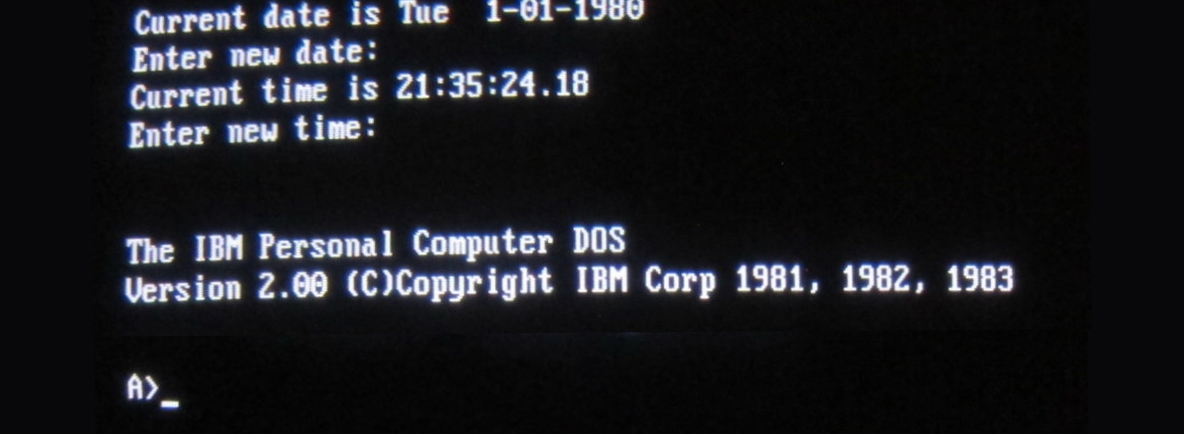
Post-chat UI

Parallel Chat - UI/UX case study of a new chat interaction

Chat App UI PSD

300 UI in 300 Days — Day 9: In chat group buy design concept

AI chat bot UI
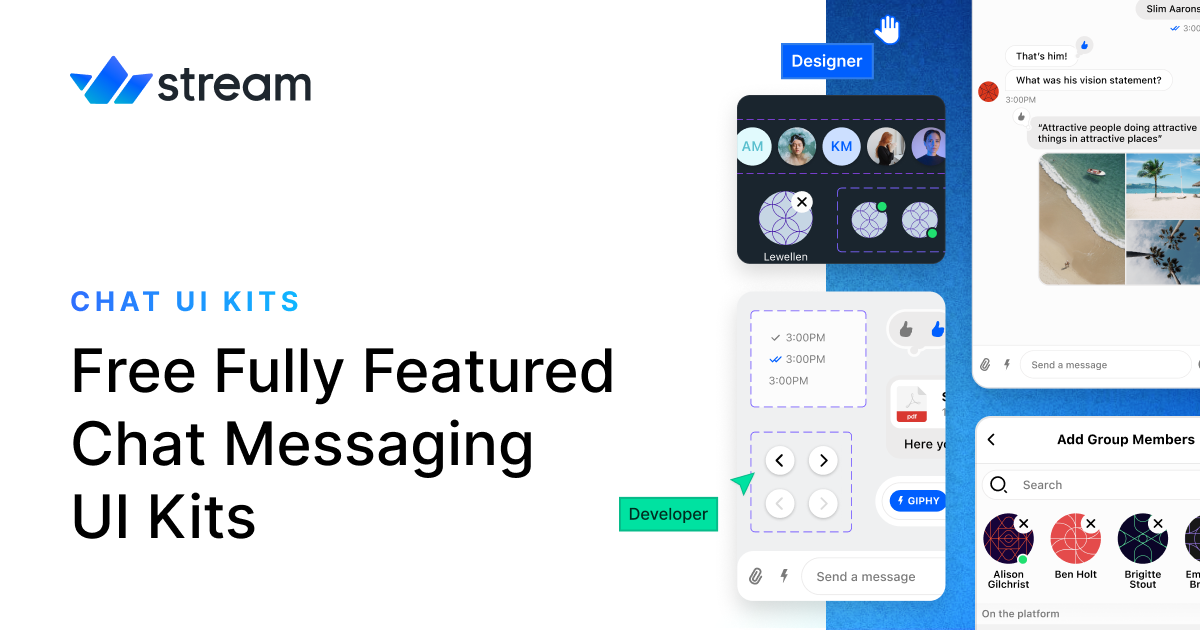
Free Chat/Messaging UI Kits for Your Website or App

AI chat bot UI
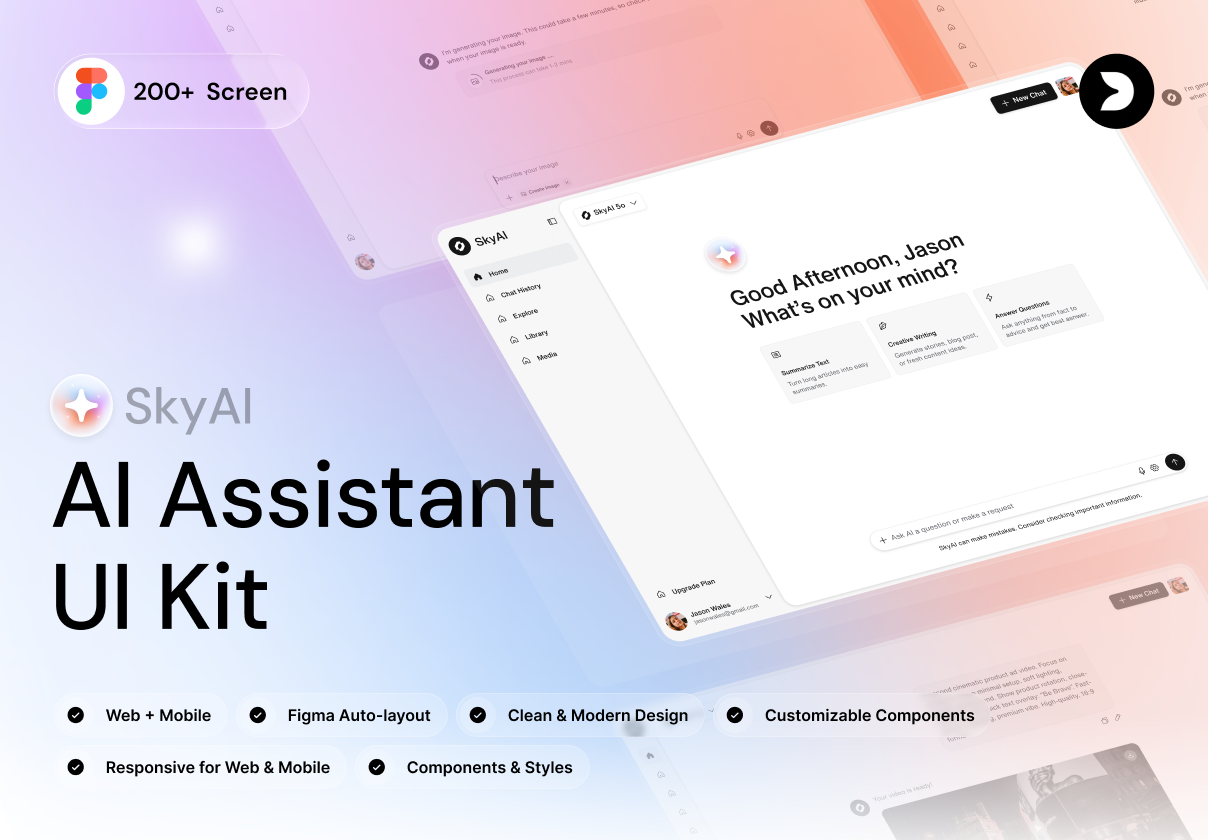
SkyAI – Ultimate AI Chat & Productivity UI Kit

Chat System UI

MagAI - AI Chat Dashboard UI Kit

Chat Ticket UI UX Teams UI UX

Kuest Chat UI Excellence
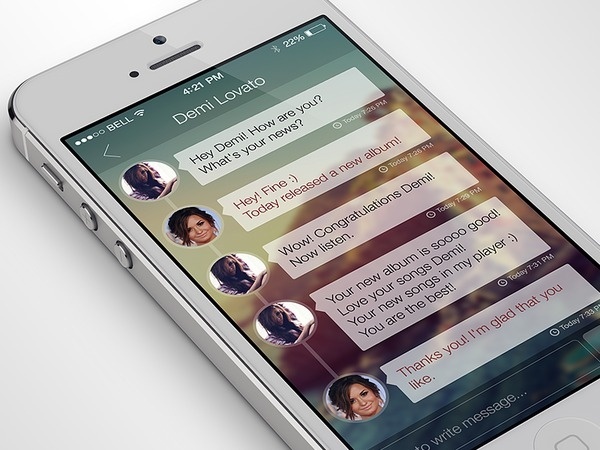
iPhone Chat App #dribbble #ux #ramotion #ios7 #design #application #ui #iphone #behance #app #inteface #gui
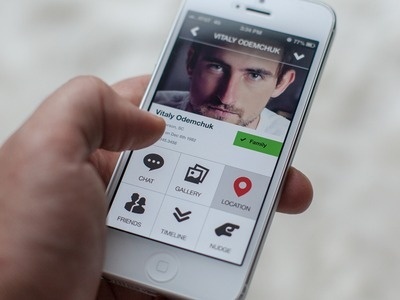
close profile #green #gallery #white #red #chat #ui #location #friends #buttons

Sleek & Modern AI Chat Mobile App UI

Chat Screen - UI

3D Illustration for Login Page ARTIN AI Chat Dashboard UI Kit
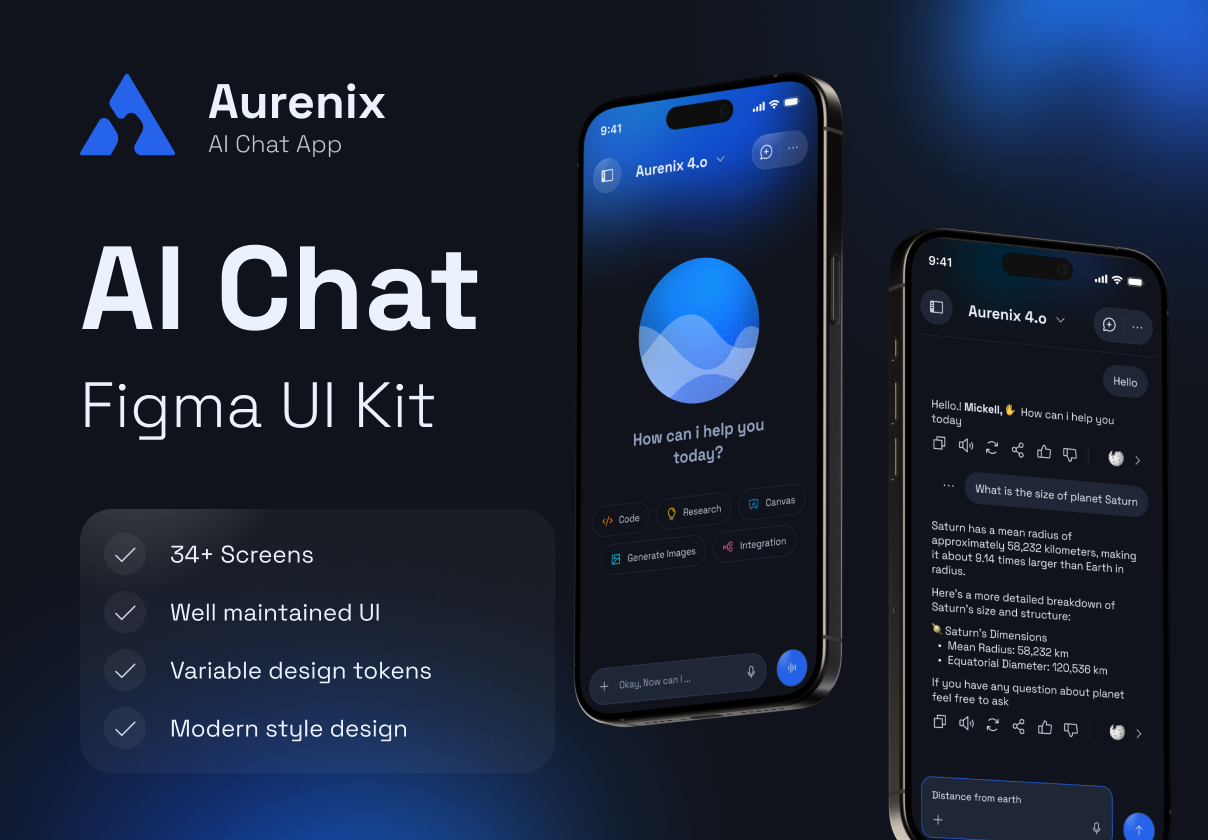
Aurenix – AI Chat App UI Kit
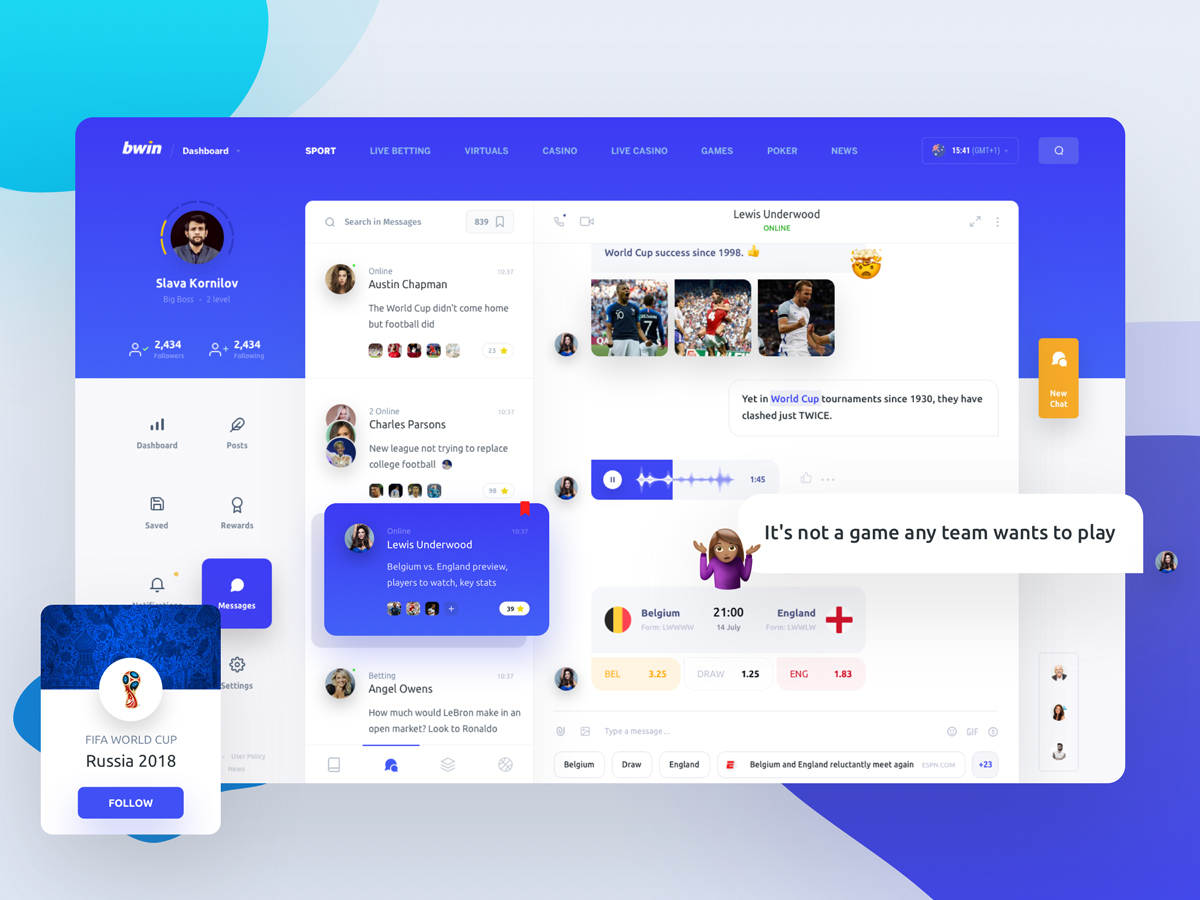
UI Inspiration: This week's selections from Slava Kornilov, Hristo Hristov and more
UI Inspiration: This week's selections from Slava Kornilov, Hristo Hristov and more AoiroStudio Jul 16, 2018 It's that time of the week for our collection of UI/UX interactions to boost your UI inspiration. We are focusing on cool animations, layout designs, UX thinking and more. We are mixing it all from static, dynamic and even live prototypes, this might be a great weekly series to bookmark! This week, we are kicking it off with a very cool combination of colours and UI components designed by Slava Kornilov. You should check out another intuitive UI transition by Ning xiao dong about a Wallet App page. Hope this will give you some inspiration! In this collection we are featuring the work from Slava Kornilov, Hristo Hristov, Adam Przybylski, Shaban Iddrisu™ and more. More Links For more, check out Dribbble Follow my tweets @aoirostudio Follow my pictures on Instagram via Dribbble Design by Slava Kornilov Design by Hristo Hristov Design by Adam Przybylski Design by Shaban Iddrisu™ Design by Yuanxu Design by Robert Felizardo Design by Ning xiao dong Design by Abdullah Un Noman Design by Veera Design by QiYang Design by Aleksandr Lunev Design by Netflayo Design by JUST Team Design by Josh Parenti Design by Christian Puga Design by Boja Design by Graphic Assets Design by Alexandr Kotelevets Design by Sunil kumar Design by Yolanda ju Design by Prometheus x GTR Design by Shekh Al Raihan ✪ Design by JONDesigner Design by Giga Tamarashvili Design by Zahidul Design by Divan Raj ui inspiration UI/UX ui design interaction design

Marketplace Service Provider Chat UI
2019 Biggest UI Design Trend
2019 Biggest UI Design Trend abduzeedoJun 20, 2019 So we have a new UI design trend all over us and it deserves a post here on ABDZ. It’s quite clear to notice it, just spend some time on Dribbble and you will spot it right away. This post is literally from three or for Dribbble pages of beautiful mocks. The interesting thing, and what drove me to write this post was when I saw the new Facebook product called Calibra. It features all the same UI patterns, rounded corners that in some way match the phone and screen rounded corners. My interpretation is that as phones become bezeless the screens now match the hardware form, so the software follows the same direction. Apple and Samsung have been exploring this for quite a bit, but now it seems to be all over the place. Anyways, enough talk and here is a collection of designs with the new super rounded corner widgets. UI Design Trends
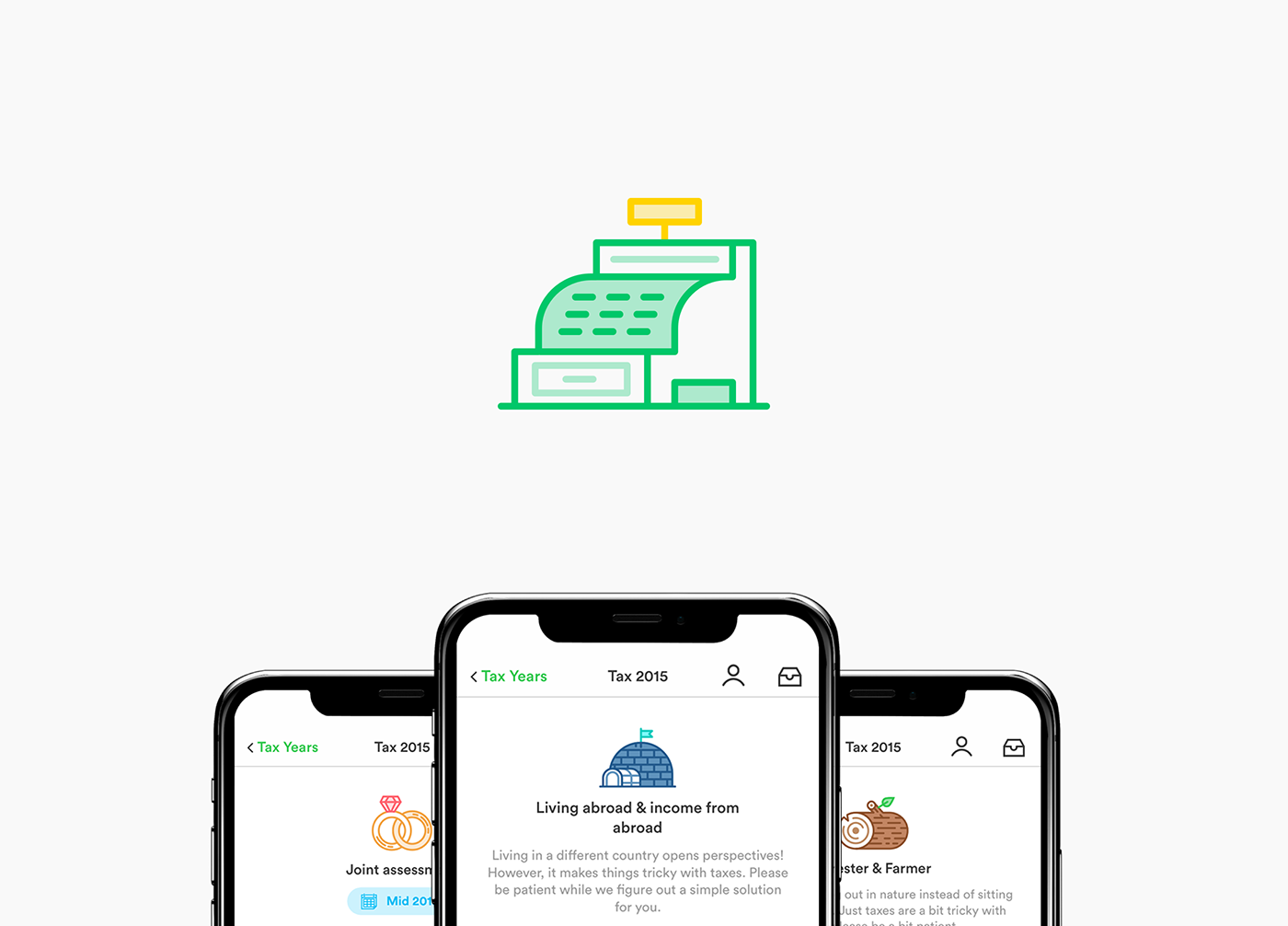
taxfix :: app for tax declarations
PIXEL-PERFECT ICON SET FOR TAXFIX – Taxfix made tax declarations not just easy but actually fun. The Berlin based company combined a chat-like questionnaire with icons and progress driven animations. The app is available for iOS and Android and lets you do your taxes of the last 4 years. The download is free of charge, only if you are getting a tax refund and decide to send to the tax office, they'll charge you a fix amount. Since 2017, beside some help for the UI, my main focus is illustrating icons for the different usages of the app. The two most prominent ones, are the one for the questionnaire and the different tax exemptions.
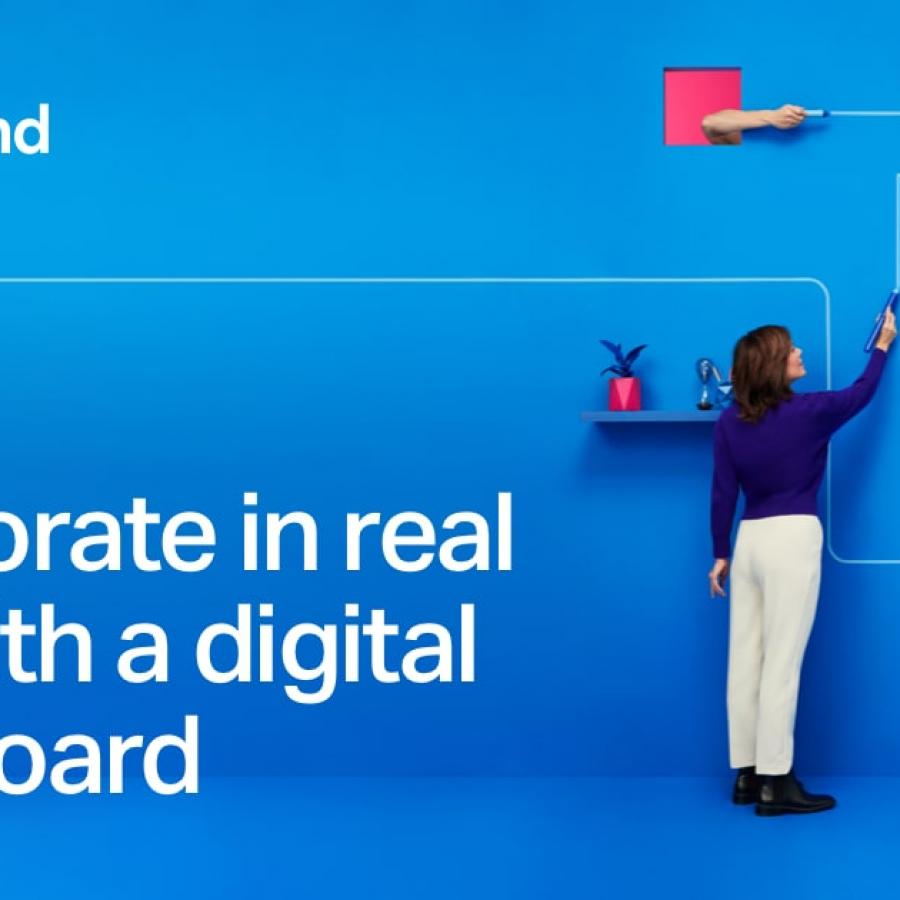
Meet Velocity: a UI kit and complete design system by InVision
Meet Velocity: a UI kit and complete design system by InVision AoiroStudioJan 10, 2019 Our friends from InVision is introducing Velocity, a UI kit and complete design system. With more than 300 UI elements, 70+ components and 30 screens; a complete designed kit perfect for building Saas apps or/and for your next design system (Such a trendy term lately!). Available for InVision Studio, Sketch and Photoshop. Again, it's free! Get it now. In their words Designers working on a responsive web experience need to design across small, medium, and large screen sizes to understand how each component should behave in different scenarios. But not all UI kits support that. The best results in design come when you think about the form and function components have across an app ecosystem. Velocity will take care of that for you—and set you up for a scalable source of design truth. This dashboard UI kit is a best-in-class example of how to set up a design system. Take your time, dig deep, and learn how you can apply these ideas to your next project. Understanding how shared components make up a design system will speed up your next project. We know Velocity isn’t a real company, but it could be. This kit includes 10 core layouts with the following templates: Dashboard Home Analytics Vehicles Dashboard Service Reminders Map Chat User Profile Settings Sign In Sign up Beep beep. Meet Velocity, a UI kit and complete design system for an imaginary self-driving car company. Borrow, remix, and remake for your own app. Meet Velocity More Links Get Velocity now Get Velocity now
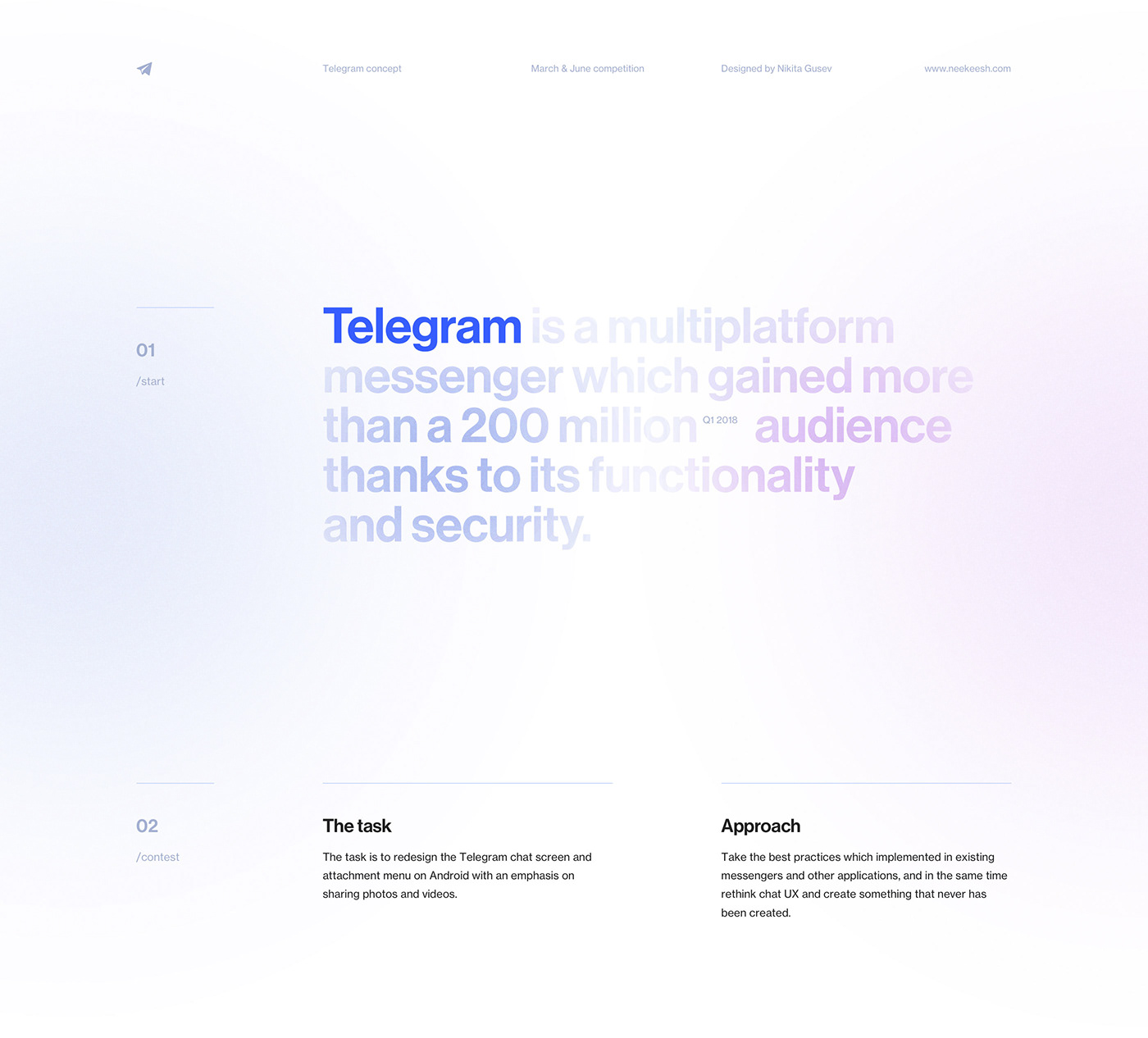
The Future Of Telegram
The first task was to redesign the Telegram chat screen and attachment menu on Android with an emphasis on sharing photos and videos. The second task was to create UI visualizations of voice calls on Telegram. Expected UI animations should demonstrate how a user starts, accepts and ends voice calls.
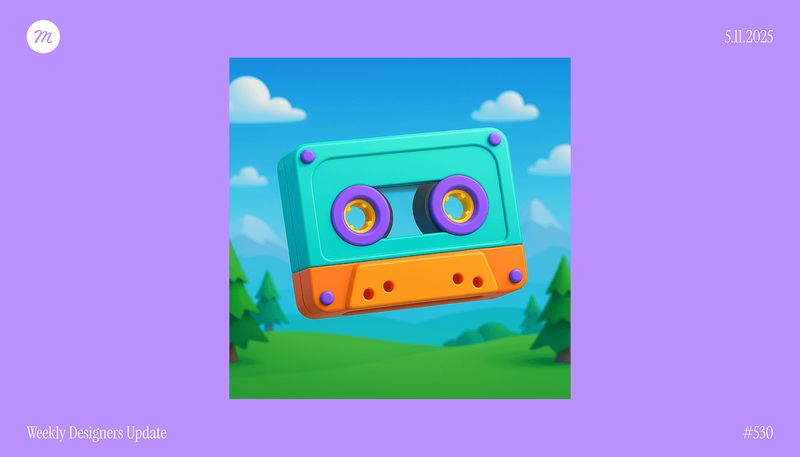
Weekly Designers Update #530
Your weekly dose of design inspiration, featuring the hottest projects, must-have tools, and game-changing products.Looking for more daily inspiration?Download Muzli extension, your go-to source for design inspiration!🏆 Muzli Community UploadsWant to get featured? Upload your work to Muzli.meTweet by Slavaby Kornilov SlavaAI Board Work Tasks🔗 View the project.Animal Futuresby Unseen StudioExplore five immersive worlds, each showing a different future for animals, and learn how your choices impact their well-being.🔗 View the project.Brand Design for an AI-Driven Learning Platformby ZajnoWhile working on the visual identity for Gentle Rain, we drew inspiration from the early days of technology and entertainment — when hip hop, the movie industry, and personal computing were just emerging on the U.S. West Coast…🔗 View the project.Hand-Thrown Stonewareby Quang PhanA study of clay, light, and balance — translated into pixels. Inspired by Hanoia, this concept celebrates the quiet beauty of handcrafted stoneware.🔗 View the project.🔥 Must-See Design PicksOusmane Dembélé — Ballon d’Orby Flot Noir ™ ⏤ StudioOusmane Dembélé, from the streets to legend. A digital & immersive experience celebrating his Ballon d’Or under the colors of PSG….🔗 View the project.Michaël Bernardby Michael BernardDesigner passionné par la création d’expériences digitales sur-mesure, j’adopte une approche centrée sur l’émotion pour concevoir des projets sincères et authentiques.🔗 View the project.VAP — Video Production Studioby Studio 9PVideo post-production for brands & influencers: VAP creates impactful, original, and memorable content. Cam ON, it’s time to .mov your stories.🔗 View the project.Morphon Iconsby JAVIERMorphon Icons is a full revamp of one of my favorite icon sets, originally designed in 2017. This personal project reimagines that old work through a refreshing modern lens, introducing soft neumorphic styling, smooth motion baselines, and practical demo cases, all optimized for community use and open remixing.🔗 View the project.✨ Muzli Me — Creator SpotlightZajno Digital Design Studio is a creative digital studio known for crafting striking and memorable experiences across web, motion, and branding. Their work stands out for its refined aesthetics, strong storytelling, and attention to detail.🔗 Explore their work: https://me.muz.li/zajno.💡 New Tools & Assets for DesignersCanva UpdatesCanva introduced its biggest launch yet: the Creative Operating System, marking what it calls the Imagination Era. The update unites a redesigned Visual Suite, world-first design AI, and tools for scaling brands. Highlights include Video 2.0 for advanced editing, Canva Forms for interactive sites, Canva Grow for AI-powered marketing, and the integration of Affinity, now free for everyone. The new Canva Design Model brings editable, AI-generated designs that understand layout, hierarchy, and brand style.🔗 Explore this.Figma UpdatesAt Schema 2025, Figma introduced a new generation of design system tools built for the AI era. Highlights include Extended Collections for managing multi-brand systems, Slots for flexible component customization, and a faster design system engine with major performance gains. Figma also released an improved Code Connect UI, the MCP server for linking design and code, and Make kits that bring design systems directly into Figma Make. These updates push design systems toward smarter, living frameworks that evolve with AI-driven workflows.🔗 Explore this.Framer Halloween CampaignFramer hosted a fun virtual “Halloween Office Party” showcasing team members in creative AI-generated costumes, all displayed on a slick interactive gallery built with Framer. The project invited the community to join in by posting their own costume photos using the #FramerHalloweenParty hashtag, turning a simple holiday celebration into a visually engaging brand experience that highlights Framer’s design and web-building capabilities.🔗 Explore this….Ängelholm — Design & Brand GuidelinesModern Brand Guidelines Template🔗 Explore this.Zyra — Coded Chat AI DashboardModern AI chat dashboard built in React and Tailwind🔗 Explore this……💡 Stay inspired every day with Muzli!Follow us for a daily stream of design, creativity, and innovation.Linkedin | Instagram | TwitterWeekly Designers Update #530 was originally published in Muzli - Design Inspiration on Medium, where people are continuing the conversation by highlighting and responding to this story.

D-ID - Create professional videos powered by AI

Facebook desktop app, Mr. Robot, Art and more… Weekly inspiration roundup!

Ernest - Your Financial Wellness Coach

Weekly Designers Update #434
via Muzli design inspirationLooking for more daily inspiration?Download Muzli extension — your go-to source for design inspiration!Web design inspirationAll Around Us* Environment Explorer Collection AW 2023Portfolio for AAU product design graduates.Minimalistic, grayscale color scheme, storytelling layout, interactive elements, non-traditional typography..ButtermaxOnline store for a footwear brand.Monochrome palette, product-centric layout, bold typography, simple navigation, photographic elements..KidSuper WorldDigital platform showcasing KidSuper’s creative universe.Surrealism-inspired, vibrant colors, animated elements, interactive layout, playful typography..Oovra | Dedicated Sales & Support For Professional ArtistsWebsite for a sound licensing and music curation company.Elegant, monochrome design, dynamic layout, audio-visual interactivity, classy typography..Design ResourcesInteriorry — Interior design Webflow Website TemplateInteriorry is a Webflow template for Architecture and Construction Companies, Interior Design Studios and Architecture Studios with modern design. Perfect for growing your business..Gilbbert — Portfolio Webflow Website TemplateIntroducing Gilbbert — a modern Webflow template designed for designers who want to showcase their work through a portfolio website with a touch of aesthetic minimalism and sophistication..Moore — One Page Webflow Website TemplateMoore is a professional template for agencies, startups and consultancies. With a strong focus on clean aesthetics and smooth interactions it serves as the perfect foundation for showcasing your business in an appealing way..TEasy Todo: TaskList & Calendar App UI KitEasy Todo: TaskList & Calendar App UI Kit we design in Figma.Laptop Office Desk MockupEditable PSD Mockups of Laptop Screens on Office Desk.SmartBot — Saas WebsiteSmartBot is a powerful Framer template for AI-powered products, seamlessly enhancing your startup or SaaS offering. Unlock the potential of AI with this powerful template..Product SpotlightAI Logo Designer — Ai MagicxCraft distinctive and personalized logos without depending on stock designs. Harness the prowess of A.I. to guide every facet of your logo design journey with.Typist — animated typing text for forms and chat UITypist helps make your prototypes look so so real by turning text layers into animated, typing text components. No more super-fake janky forms! Bring that chat interface you’re working on to life!.Uiverse.ioExplore 3000+ Free UI Elements: CSS & Tailwind.FeedbackWizard.aiAI Magic in Figma, at your fingertips — design wisdom applied to your design, in seconds. See the demo at feedbackwizard.ai.Design inspirationDaise — Flower Shop Landing Page Figma Template by Ahmad S. Afandi for Peterdraw StudioFinance Management Dashboard by Bogdan Falin for QClayMolecule — Smart Home Mobile App & UX UI Design by RondesignlabFintech App UI by Ofspace UX/UIDSTT kitchenware Logo | Visual identify | packaging厨具包装 by zwqy .lab and zwqy. LIDINCalligraphy Manuals: Blackletter — Rotunda by 0. itemzero, XESTA STUDIODiscovery Coffee Pack by BANG BANGOIOLAB® by HUGMUN Life Stills by viction:ary .December 6 | Poster 3D by Duong NguynRetro Sneakers | Lettering & illustration by Ana MorenoWeekly Designers Update #434 was originally published in Muzli - Design Inspiration on Medium, where people are continuing the conversation by highlighting and responding to this story.
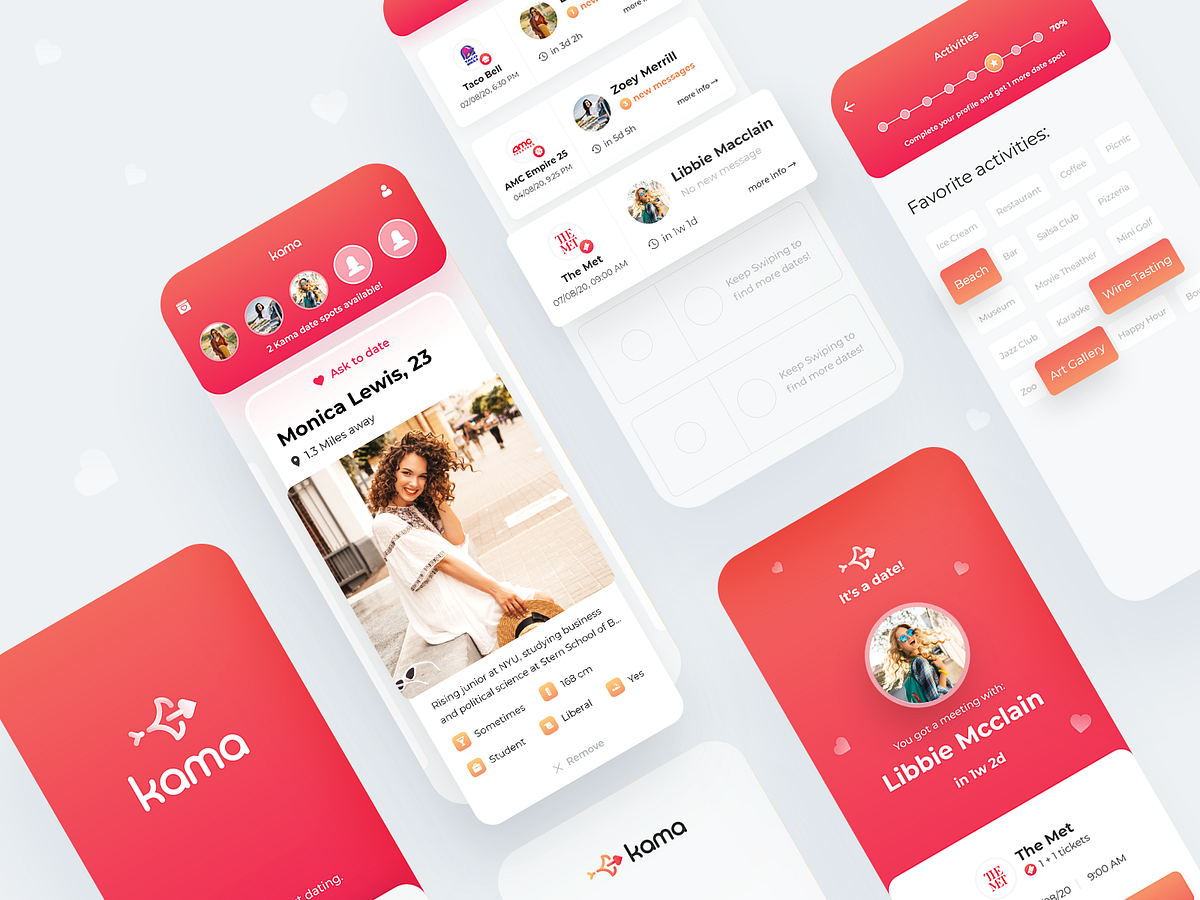
Redefining Dating Apps — UX/UI Case Study
Redefining Dating Apps — UX/UI Case StudyIntroductionToday a lot of dating apps in the market focus on matching users and provide a texting platform. They do so in different ways, but their focus is on providing their users with introductions to each other. As such, those can be described as matching-apps. Their main fault is their matching-dating ratio, which stands on an average of 150:1. As such, people who look for in-person dates might find it hard to achieve those through dating apps.ProblemI formulated precisely the problem that Kama came to solve according to the familiar pattern: who it is about, what they are trying to do, what is actually happening, why it is happening that way and what it makes them feel.Young adults with little free time who are looking to make a romantic relationship try to optimize the time it takes them to find a partner through dating apps. They fail to do that and set up real-world dates because the apps only help to initiate texting conversations and not everyone manages to take it to the physical realm, which makes them feel fatigued and frustrated.ResearchSurveys and InterviewsI started the research phase with surveys. The survey was conducted among 300 single American students. Here are some of the significant data that received:User PersonasBased on the surveys and interviews conducted with several potential users, I formulated two personas:Pain PointAs mentioned, the main problem is the difficulty of turning the matches into dates. For the solution to solve this problem, I summarized the research into 4 main pain points that cause difficulty for the users:Lack of texting skills: Frustration by users who lack texting articulation skills, due to interactions on dating apps built entirely on texting skills.Fear of rejection: Fear of rejection eliminates the chance that one of the individuals will take a step and offer to meet for a date.Swiping without purpose: Since swiping requires no commitment, matching without purpose is very common, leading to a low match-to-date conversion rate.Date’s logistics: Difficulty determining specific place and time. In most cases it ends with: “let’s get drinks some time”.SketchesAt the ideate stage, the main focus was on the main screen. I put a lot of thought into the swiping mechanics, the display of potential profiles to match, the preview of the user’s dates, and more.WireframesAfter the general idea was formulated in the sketchings, I moved on to the wireframes phase. At this point I concentrate only on the functionality and usability of the app when the goal is to create an intuitive experience with as few frictions as possible.BrandingThe design of the screens is derived directly from the company’s branding and since Kama didn’t have one, I was given the responsibility to create it. Kama’s story is very simple: creating real-life relationships easily and quickly, without all the noise that is usually around it.So I chose two main colors: red and yellowish-orange. The red color symbolizes the fact that Kama does not try to be sophisticated, it concentrates on the simple thing — love. The yellowish-orange color and the arrow-shaped symbol gives a sense of fast pace. No nonsense, straight to the point.The origin of the name Kama is in the Hindu god of human love, Kamadeva. According to the stories, he walks around with a bow and arrow like Cupid’s.Final DesignOnboarding FlowIn this section, it is essential to explain what sets this app apart from any other dating app. The user understands that the emphasis is on dating, that he can get discounts and continue to use the app for additional dates.Onboarding screensMain ScreenThis screen is the heart of the app. I put a lot of thought into finding the right pattern that would meet all the needs. At the top in the red rectangle are the Date Spots. The user is limited to 5 dates at a time to increase the importance of choosing the right date. The familiar swiping got a twist and instead of right and left, it is up and down. Dragging the profile up creates a feeling that you are putting moving it to the Date Spots. The profiles appear one by one but unlike other applications — in a horizontal carousel. This means that you don’t have to decide if you approve or reject people and you can continue scrolling. This solves a big problem: once the user runs out of places on the Date Spots, he can no longer swipe profiles up. But what he can do is filtering — swipe down the profiles he didn’t like from the potential profiles list. Once a spot becomes available, the user will be able to swipe up profiles from the remaining once.Main screenIt’s a date!As soon as two people swipe each other up — a date has been set for them! The system automatically and wisely selects the place and time according to each user’s preferences. On the dates screen, it was vital not to make it a regular chat lobby but to give the date much more expression than the texting. Same on the date/chat screen — the details of the date appear first in a big and clear way and only then can you slide up and start chatting.From left to right: matching screen, dates screen, date/chat screenSign UpKama is all about setting the most accurate dates, so the registration process is not short and requires a lot of details. In order not to discourage the user, I’ve added an element of progress that pushes the user to create a perfect profile and fill in all the details. The prize for those who reach 100 percent is an option to increase the dating quota from 4 to 5.Sign up screensConclusionsThe work on the app was fascinating. Although the dating app market is flooded with loads of apps that look the same, Kama brings something different to the table. It allows people to bridge the technological gap and test their connections in real life. Together with the guys from Kama, we carried out an end-to-end process — from understanding the users’ real needs to implementing it in an attractive and thoughtful interface.That’s all for this time, thanks for reading it to the end! If you enjoyed this article please click the clap button or leave a comment below — I would love to hear your feedback (Did you know? You can give up to 50 Claps on an article! Just hold the clap button for a few seconds 😉)Feel free to reach out to me on LinkedIn!You can find more case studies like this on my portfolio: www.nadavpapay.comRedefining Dating Apps — UX/UI Case Study was originally published in Muzli - Design Inspiration on Medium, where people are continuing the conversation by highlighting and responding to this story.

Weekly Design Inspiration #293
via Muzli design inspirationDesign by Marco OggianDesigners’ Secret SourceThe best design inspiration — expertly curated for you.Muzli is a new-tab Chrome extension that instantly delivers relevant design stories and inspiration. Learn moreSocial Chat by AfterglowOptimizer App by Sandro TavartkiladzePill Speaker Website by Halo UI/UXSmart Home Manager App by by Dmitry LauretskySiopp 📦 | Cargo tracking app by Alexander Plyuto 🎲heart by Alexandra ZuttoSunset on Mars (fine glitch art) by Nina GeometrievaCooking with Grandma by Mathieu L.Bhttps://medium.com/media/b124085903eb4c374694d1c91e3c4b0a/hrefGoogle Doodle World Cup in Russia Edition (Part Two) by valsPacific&Co. by Marco OggianCLIENT ERROR 4xx v02 by RETOKAKINSA Organic Skincare by Lara Scarrwhiskey concept by Vadim BriksinSerration Object by found / FoundedWeekly Design Inspiration #293 was originally published in Muzli - Design Inspiration on Medium, where people are continuing the conversation by highlighting and responding to this story.

UI/UX case study: Hybrid event platform for mobile.
Detailed documentation of the process and approach that was taken to create this mobile application.Background StoryA few months ago while attending an online event, I met some interesting people with similar interests. After the event ended, it appeared that I can no longer text them. The first thing that came to my mind was “why do I need to move to another platform to stay connected is it good for the app user base?” so naturally I started exploring other online events platforms after a while it was clear that there is almost no such platform exist that has chatting feature after the event has ended not only that I saw a lot of flaws in them, there exist almost no platform that provides hybrid events i.e the event one can attend online as well as offline, not only that there are only a few event apps that exist and only one that has hybrid events. After talking to other people who generally attend events I came across these problems.What is Treffen?Treffen is a hybrid event app that allows users to attain events offline and online simultaneously. The name translates meet up in german.👀ProblemsAfter doing research I found that people don’t visit event platforms, whatever event the users attend they get to know about it through social media ads or through suggestions which is the main reason why event platforms have a lower user base compared to other web apps.Navigating inside the events on the web is easier but there are so many things inside an event it is comparatively tough to implement everything in a mobile app.how do we quickly navigate from the inside of the event to the marketplace and quickly navigate between different events?DeliverablesI have mostly focused on creating 2 different user journies.1. Surfing through the event marketplace to booking an event.Users can scroll through the list of events, sort and search them based on filter, connect with people, chat with them, see events created by the people they follow and create their own event.2. Look and feel for the hybrid event.Contains Reception which has event details and sponsors list, number of participants and their list, event speakers, booths, stages which have a mainstage where the main event is happening and backstage where different booths are live and users can interact one on one with each other or engage in a group meeting.🔍ResearchBefore jumping directly into the design it was necessary to understand what other online event apps provide and how they work, few questions arise such as:what are the most important things in an online event?How do users generally get to know about events?Do users browse through the event marketplace?How can we interact with people present on-site while we are attending the event online?To get the answer to these questions I contacted a few more people and asked what do they seek from an online event what is important to them and what is not, Showed them the journey of competitors and what they like in them and whatnot, after gathering some data through interviews it was time to get the data on graphs and make data-driven decisions.Here are the results of the questions asked to a group of people:After gathering data from the users it was not time to do some competitive analysis.I went through 10 different online event platforms CMX Summit, Adobe events, Hopin, Eventbrite, Collison app, Evolve, Hubilo, GlSR, Smashup & Spotme.Noted their patterns, data, and flow. A few of them have some really good features like group chats, Levels, and many more. I wanted to keep things simple for the first draft and decided to go with some limited but important features.😀User Personas.Based on the user interviews and research I have designed 3 personas who are the potential users of this app.💡Information Architecture.https://medium.com/media/93b34beeead6f01d9015494ade1acb65/href🖊WireFraming.Before getting on Figma I started with sketching and did a lot of iterations. Few of them were looking good on paper but were not practical in the long run. Designs were changed a lot in the end product.📝Iterations.I follow the atomic design system so I started with creating smaller components such as user detail cards, navigations, event cards, and so on.📱Final DesignSo without wasting much time here is the final prototype.https://medium.com/media/91a486e3d5571b93bab158bcb8bd1851/hrefNote for PC users: Press Z or select scale down to fit from the options menu on the top right cornerFor Mobile users: Click on the prototype and use it on a new window for a better experienceThis design does not contain all the screens and only follows the two main flows.HooksTo motivate the users to attend more events, I have introduced T-coins they work like a digital currency that you can only gain by buying more tickets. Not only that the users can even make their payments using them.The main purpose of this app was user engagement, so to make the users keep visiting the app I have allowed in after-event messages they work similarly to any other messaging apps.The users would get notified when an event is created by someone they follow.👓Conclusion & LearningsAfter completing the designs I’ve learned that reviews and iterations are really important even when you are done with all the prototyping getting designs tested getting reviews and improving the product is what makes the product successful.UI/UX case study: Hybrid event platform for mobile. was originally published in Muzli - Design Inspiration on Medium, where people are continuing the conversation by highlighting and responding to this story.
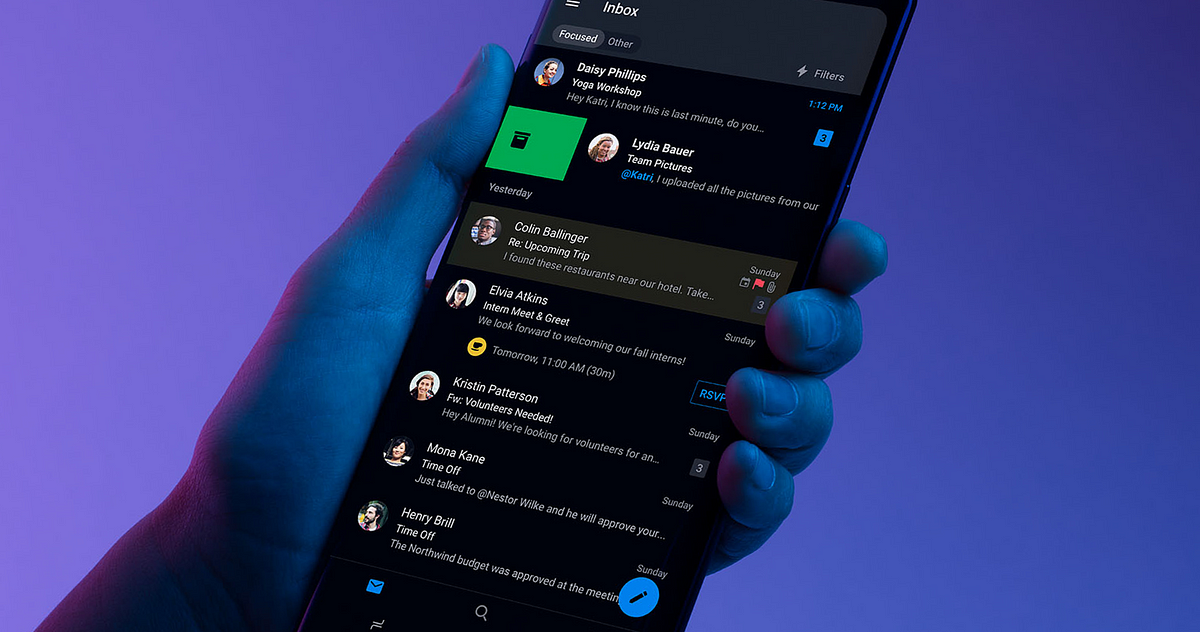
Designing for Dark Mode: More Than Flipping a Switch

Designing the Future of Banking: Actionable UI/UX Tips for Neo Banks
IntroductionWe have all witnessed how the COVID-19 pandemic has accelerated the pace of digital transformation across industries, and banking is no exception. With social distancing measures and lockdowns in place, consumers increasingly turned to digital banking channels to manage their finances. As a result, we’ve seen a surge in the popularity of Neo-banks, which have disrupted traditional banking models by providing a better user experience through innovative UIUX design.Since we have already explained how UIUX design plays a critical role in the success of Neo-banks, in our previous article, we decided to share some of the best UIUX design tips which can help you design a successful Neo-banks platform in this blog.If you’re a UIUX designer working in the Fin-tech industry or a business owner looking to launch a Neo-bank, this article will provide you with a comprehensive overview of the key UIUX design tips you can implement for the success of the neo-banking landscape & share what does the future of UIUX design hold for neo banks.Let’s begin,5 Actionable UI/UX Design Tips for Neo-banks to overcome user experience challenges:Seamless Onboarding: A crucial element of UI/UX Design for Neo BanksThe first impression is the last. The onboarding process is the first and critical step towards building a relationship with a user. So, ensure the process is streamlined and easy for the user.From simple sign-up forms to personalized welcome messages and tutorials, every aspect of the onboarding experience should be designed with the user in mind. This means ensuring that your design is easy to access for people with disabilities, including those who are visually impaired or have limited dexterity.We recommend avoiding the traditional way of authentication, like entering passwords and one-time codes; instead, incorporating technologies like biometric authentication and digital signatures can help make the onboarding process faster and more secure as banking users are low in patience to check or execute their financial transactions.Revolut, for example, uses AI-powered facial recognition technology to verify users’ identities, making the onboarding process a breeze.2. Simplicity is Key: Prioritize a clean and intuitive dashboardPoor UIUX can impact the success of the neo-bank. So, it is wise to focus on the hallmark of neo-banks which is creating a minimalistic design. Start by identifying the user scenarios and use cases, i.e. if the user handles multiple accounts, design an intuitive user journey to switch from one account to another with ease second, and ensure that the important information is always at the user’s fingertips by preserving a mobile-first design approach.For instance, post logging in, any neo-bank customer would like first to check all their critical financial status information upfront, like balances, transactions and so on. Hence thoughtful information architecture, visual hierarchy, effective use of whitespace, designing for smaller screens, touch interactions, and optimizing for speed is vital. Keeping the design simple and user-friendly can reduce user frustration and improve the overall satisfaction of the customer.Monzo is an excellent example of a neo-bank with a simple and intuitive UI design emphasising ease of use.3. Give a personal touch: Tailor the User Experience to boost engagement and loyaltyIn today’s highly competitive Neo-banking landscape, offering a personalized user experience can be a game-changer for boosting engagement and building customer loyalty. By using data analytics and insights, UX designers can create personalized experiences for their users based on their transaction history, location, and other factors. Neo-banks can provide this by incorporating personalized messaging, customized dashboards, and targeted offers and promotions.For example, the N26 platform has a feature that automatically categorizes users’ spending based on their transaction history, making it easier for them to track their spending habits and plan their further expenses accordingly.3. Engage Users with micro-interactions: Include small animations & gamificationBy adding subtle animations, such as a loading spinner or a checkmark when a task is completed, UIUX designers can enhance the user experience and engage users, improving personality and brand identity; however, animations shouldn’t be overwhelming and distracting to users. Gamification, to is an effective way to increase user engagement and create a fun and interactive user experience by incorporating challenges, rewards, and badges.Chime, for example, rewards users with “Chime Coins” for making purchases with their debit cards.4. Provide Real-time Feedback:Real-time feedback is essential for neo-banks to build trust and confidence with their users. Providing real-time feedback on transactions, balances, and other activities can help users feel in control of their finances, reducing the hustle of visiting the bank or waiting till the end of the day for their transaction status update. According to the nudge theory, banking AI context-based suggestions, which are powered by analytics & big data, can provide an amazing customer experience.For this, you can check how Starling Bank provides real-time transaction notifications and balance updates, helping users stay on top of their finances.5. Streamlining Payment Workflows: For Faster Payment ProcessingProviding quick and efficient payment processing is crucial for Neo Banks to stay competitive. With the rise of instant messaging apps and other fast-paced technologies, users expect payments to be processed quickly and seamlessly.UIUX designers can play a key role in improving payment processing times by simplifying the payment process and reducing the required steps. Additionally, integrating with third-party payment providers and leveraging cutting-edge payment technologies can further improve payment processing times. Ultimately, providing payments faster than instant messaging can be a key differentiator for neo-banks, increasing customer satisfaction and loyalty.Future of UIUX Design for Neo BanksThe future of UI/UX design for neo-banks is likely to be influenced by a number of trends, including personalization, voice and chat interfaces, data visualization, security, and seamless integration.As neo-banks continue to grow in popularity and expand their services, UI/UX designers must stay up-to-date with these trends and find new ways to create interfaces that meet the evolving needs of users and the industry.Overall, the focus will be on creating personalized, intuitive, and secure interfaces that provide a seamless experience for users while also leveraging new technologies and data visualization techniques to help users better understand their financial situation. By embracing these trends and staying ahead of the curve, UI/UX designers can help neo-banks continue to innovate and provide value to their customers in the years to come.Conclusion:Neo-banks need to focus on creating a user-friendly and intuitive interface to make a mark in the digital banking space. By following these tips and incorporating real-life examples, neo-banks can create a compelling and engaging user experience that keeps users coming back.Designing the Future of Banking: Actionable UI/UX Tips for Neo Banks was originally published in Muzli - Design Inspiration on Medium, where people are continuing the conversation by highlighting and responding to this story.
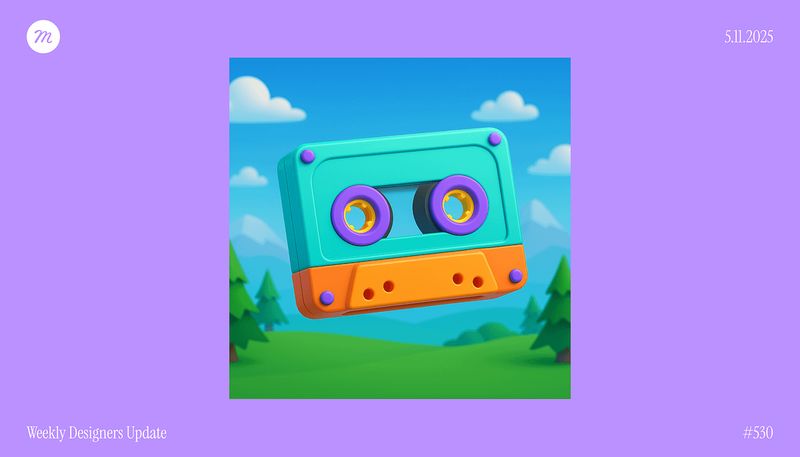
Weekly Designers Update #530
Your weekly dose of design inspiration, featuring the hottest projects, must-have tools, and game-changing products.Want a daily boost of creative energy? Install the Muzli extension,your nonstop source for design inspiration, right in your browser! 🚀🏆 Muzli Community UploadsWant to get featured? Upload your work to Muzli.meTweet by Slavaby Kornilov SlavaAI Board Work Tasks🔗 View the project.Animal Futuresby Unseen StudioExplore five immersive worlds, each showing a different future for animals, and learn how your choices impact their well-being.🔗 View the project.Brand Design for an AI-Driven Learning Platformby ZajnoWhile working on the visual identity for Gentle Rain, we drew inspiration from the early days of technology and entertainment — when hip hop, the movie industry, and personal computing were just emerging on the U.S. West Coast…🔗 View the project.Hand-Thrown Stonewareby Quang PhanA study of clay, light, and balance — translated into pixels. Inspired by Hanoia, this concept celebrates the quiet beauty of handcrafted stoneware.🔗 View the project.🔥 Must-See Design PicksOusmane Dembélé — Ballon d’Orby Flot Noir ™ ⏤ StudioOusmane Dembélé, from the streets to legend. A digital & immersive experience celebrating his Ballon d’Or under the colors of PSG….🔗 View the project.Michaël Bernardby Michael BernardDesigner passionné par la création d’expériences digitales sur-mesure, j’adopte une approche centrée sur l’émotion pour concevoir des projets sincères et authentiques.🔗 View the project.VAP — Video Production Studioby Studio 9PVideo post-production for brands & influencers: VAP creates impactful, original, and memorable content. Cam ON, it’s time to .mov your stories.🔗 View the project.Morphon Iconsby JAVIERMorphon Icons is a full revamp of one of my favorite icon sets, originally designed in 2017. This personal project reimagines that old work through a refreshing modern lens, introducing soft neumorphic styling, smooth motion baselines, and practical demo cases, all optimized for community use and open remixing.🔗 View the project.✨ Muzli Me — Creator SpotlightZajno Digital Design Studio is a creative digital studio known for crafting striking and memorable experiences across web, motion, and branding. Their work stands out for its refined aesthetics, strong storytelling, and attention to detail.🔗 Explore their work: https://me.muz.li/zajno.💡 New Tools & Assets for DesignersCanva UpdatesCanva introduced its biggest launch yet: the Creative Operating System, marking what it calls the Imagination Era. The update unites a redesigned Visual Suite, world-first design AI, and tools for scaling brands. Highlights include Video 2.0 for advanced editing, Canva Forms for interactive sites, Canva Grow for AI-powered marketing, and the integration of Affinity, now free for everyone. The new Canva Design Model brings editable, AI-generated designs that understand layout, hierarchy, and brand style.🔗 Explore this.Figma UpdatesAt Schema 2025, Figma introduced a new generation of design system tools built for the AI era. Highlights include Extended Collections for managing multi-brand systems, Slots for flexible component customization, and a faster design system engine with major performance gains. Figma also released an improved Code Connect UI, the MCP server for linking design and code, and Make kits that bring design systems directly into Figma Make. These updates push design systems toward smarter, living frameworks that evolve with AI-driven workflows.🔗 Explore this.Framer Halloween CampaignFramer hosted a fun virtual “Halloween Office Party” showcasing team members in creative AI-generated costumes, all displayed on a slick interactive gallery built with Framer. The project invited the community to join in by posting their own costume photos using the #FramerHalloweenParty hashtag, turning a simple holiday celebration into a visually engaging brand experience that highlights Framer’s design and web-building capabilities.🔗 Explore this….Ängelholm — Design & Brand GuidelinesModern Brand Guidelines Template🔗 Explore this.Zyra — Coded Chat AI DashboardModern AI chat dashboard built in React and Tailwind🔗 Explore this….Designers’ Secret SourceLooking for more daily inspiration?Download Muzli extension your go-to source for design inspiration!Get Muzli extension for freeWeekly Designers Update #530 was originally published in Muzli - Design Inspiration on Medium, where people are continuing the conversation by highlighting and responding to this story.

ChatGPT & Beyond: A Next-Gen Wave in Personalized UX/UI Design
Illustration by Joana RicardoIn the realm of digital design, generative AI emerges as a transformative force, poised to revolutionized the way UX/UI designers craft exceptional user experiences. This remarkable tool, with its autonomous content generation capabilities, holds the promise of automating repetitive tasks, fostering creative co-creation, and unlocking personalized, adaptive, and dynamically evolving user interfaces. As generative AI continues to evolve, its impact on UX/UI design is poised to transcend boundaries, shaping the future of digital interactions in profound ways.AI’s Influence on UI ParadigmsIn the ever-evolving landscape of UX/UI design, the convergence of artificial intelligence (AI) brings forth a multitude of challenges and opportunities. This discourse isn’t about AI replacing design tools; it’s an exploration of AI’s substantial impact on UX/UI design. Our task as designers is to uncover effective strategies for harnessing AI’s potential to craft engaging and user-centric digital experiences.Jacob Nielsen’s prophetic vision foresees a future where AI significantly shapes user interfaces. This impending transformation prompts a comprehensive revaluation of the UI paradigms that have underpinned design for decades.Understanding the evolution of these paradigms offers invaluable insights. Let’s revisit the historical progression. Nielsen’s quote underscores a pivotal shift: “ User interfaces will be imbued with more AI than ever before”. This compositional change inherently alters the roles of UX professionals. To comprehend this shift holistically, it’s crucial to trace the trajectory of UI paradigms.The first paradigm traces back to the era of batch processing. Specifications were handed to computers, and outcomes were produced after extensive processing periods.Image via effectrodeThe second paradigm, which reigns supreme today, revolves around command-based interaction. Users initiate actions, manipulate outputs, and iteratively steer towards desired outcomes.Photo by freestocks on UnsplashHowever, the advent of AI introduces a paradigm that transcends mere command-based interactions. Enter the third paradigm: intent and outcome-based interactions. This paradigm is exemplified by contemporary AI-driven tools, particularly evident in image generation. Consider the AI-driven image creation process, where the DALL-E-inspired design philosophy reigns supreme. This approach pivots from a command-driven structure to a more conversational interface. An essential feature of this new interface mindset is the introduction of a prompt at the core of the input. Herein lies the transformation — a shift in the user’s role.No longer are users instructed step-by-step; instead, they articulate the desired outcome. This marks the emergence of the intent-based outcome specification — the third UI paradigm.AI & Machine Learning Will Change UX Research & Design (Video)Exploring third paradigmTo delve into the third paradigm in our current landscape, let’s examine a prime example: ChatGPT. With the public release of ChatGPT, a new era of content generation and interaction has emerged. While the concept of chatbots and digital assistants isn’t novel, what sets ChatGPT apart is its ability to deliver more personalized and higher-quality responses to user queries. This remarkable capability has spurred numerous platforms to seize the opportunity and integrate generative AI features.However, a prevalent issue among these applications lies in the flawed input methods employed. As we’ve previously discussed, the third paradigm emphasizes intent and outcome expectations. Yet, current applications predominantly utilize a chat box method for input with AI systems. Consider the recent feature of the Bunq app, introducing Finn, an AI assistant within a banking app. While Finn claims to assist with recognizing spending patterns and budgeting, it appears constrained by the chat box interaction method.Finn promotionl material from Bunq.For instance, the feature could enhance user experience by integrating financial projections directly into the app, rather than relying solely on user queries. The chatbot design, by confining itself to a specific interaction method, limits the potential of generative AI models in elevating individual aspects of an application.Another illustrative example involves the use of generative AI in media. AI models have been leveraged to create images and videos, revealing a friction between intent and generated results. Experimenting with these models highlights the significance of context clues and knowledge in our daily lives.For instance, when I asked Microsoft Bing to generate images of a Star Wars-inspired café, the initial results fell short of my expectations.Initial Results from first promptWith additional iterations and contextual information, the AI eventually produced results that aligned more closely with my preferences. Below I have shown some of the examples that comes closer to what I wanted when I gave the initial prompt.Final results gathered from multiple prompt iterationsThis scenario in my opinion is a glowing example of constraints of chat box style of interaction method and struggle with third dilemma within the design space for generative AI currently. The first set of images generated serves as a good result of prompt I had given but it fails to consider my personal knowledge set and preferences.I as a user have no understanding of the what toolsets the AI will be using and its understanding of its my current preferences and needs. I would be in need for a retro vibe today but in a years times, my preference can change and become a new standard. This creates a scenario where as my knowledge set and preferences changes but the initial query I had will be same with different expected results. Since the input method creates an expectation of receiving the result envisioned by user, this interaction can ultimately lead to feeling of disappointed form the interaction carried out.One way to mitigate this problem of AI’s understanding of knowledge set of user, is to allow them to give custom data to AI so they can adapt to the user preferences. OpenAI to recently added custom data set for the ChatGPT so it can have a base level of understanding from a custom data set but it still is limited with the level of understanding provided from it. It also brings the issue related to the preferences in data sets that AI has been trained on creating preferences for certain data. In the next section we will discuss some ways that can help with challenging the paradigm.Rethinking AI InteractionAdobe has been exploring various methods to assist designers in generating content within their Creative Cloud applications. Their approach in Photoshop involves an additional layer of interaction before the text input box, allowing users to select a specific area and instruct the AI to generate content within those boundaries, taking into account the existing image content and adapting to the prompt provided.Adobe photoshop showcasing the generative fill feature. Image form AdobeThis selection menu serves two purposes: it focuses the AI’s attention on a particular section of the image, providing more context, and it guides users towards achieving more specific results.These efforts echo similar AI integration challenges we’ve encountered in the past. Google Lens, an AI-powered tool that identifies objects and text in the real world, comes to mind. Adrian Zumbrunnen, in a compelling presentation on context-based interfaces and AI, addressed the difficulty in keeping users engaged while the camera scans and processes the surrounding environment. He explained that a lack of visual feedback can make the process feel unresponsive and confusing.Visual lookup feature showing the white dots around objects being scanned. image from GoogleZumbrunnen’s solution was to introduce an animation that visualizes the AI’s object identification process, providing users with a clear understanding of what’s happening behind the scenes. This visual feedback fosters engagement and encourages users to interact more actively with the AI tool. We can try to bridge the gap with some of the lessons we have learned currency to bring more context to the interface for AI. This exercise highlights the importance of considering input methods and user intent when designing AI interfaces.https://medium.com/media/c1bf8c2d9d53d69109e9d57f16c57cab/hrefWe can draw inspiration from Spark AI, which enables users to prompt the AI to assist in composing emails. While the implementation still encourages an iterative approach and introduces some ambiguity, it partially addresses this by providing options for proofreading, response length, and tone. These defined context points help users anticipate the outcome with greater clarity.Spark AI feature list, Image via SparkGoogle Duet AI, which recently debuted, offers similar features for word processing applications. However, it still faces the challenge of understanding contextual nuances. For instance, when selecting the option “make text sound more casual,” individual users may have varying interpretations of “casual.” This lack of shared understanding can limit the usefulness of these features. One potential solution is to provide more explicit descriptions for each option, clarifying their intended effect and the range of potential outcomes.A more ambitious approach involves introducing visual representations of the AI’s decision-making process. Seeing the AI “work” (represented visually) can enhance understanding and provide users with a greater sense of control over the AI’s actions. Animations showcasing image generation or text creation after a prompt is provided can effectively convey the AI’s workings and foster trust in its capabilities.As Zumbrunnen’s research suggests, without proper animations, automation and AI can be perceived as less responsive. His studies indicate that users generally prefer animations over instant results, as they provide a glimpse into the underlying processes.Current AI implementations often fall short in this regard, as the AI’s decision-making process often involves multiple steps. When users lack insights into these decisions and how they can influence them, the interaction becomes a guessing game. This lack of transparency can lead to disappointment and uncertainty in the UX.Apple Visual lookup feature showing contextual information form the images. Image via AppleApple’s approach to AI integration offers valuable lessons. Their Photos app has been regularly updated with useful features like plant identification and laundry instructions. Apple calls this feature “Visual Lookup,” and it seamlessly identifies specific objects in photos, such as animals, plants, and landmarks, providing relevant context information.In contrast to current AI interactions that rely on chat boxes, Visual Lookup is integrated directly into the Photos app, without the need for explicit user input. The AI’s findings are presented within the app’s “Info” section, accompanied by clear explanations of the identified objects and their significance. This approach makes it easy for users to understand how the AI arrived at its conclusions and fosters trust in its capabilities.ConclusionBridging the gap between users and AI requires a multi-pronged approach that combines clear input methods, visual representations of AI processes, and seamless integration into existing workflows. By adopting these strategies, we can create AI interfaces that are more intuitive, engaging, and responsive, ultimately enhancing the overall user experience.ChatGPT & Beyond: A Next-Gen Wave in Personalized UX/UI Design was originally published in Muzli - Design Inspiration on Medium, where people are continuing the conversation by highlighting and responding to this story.

How to Design an AI Assistant Users Actually Use
How to Design an AI Assistant That Actually Helps (and Doesn’t Rot in a Corner Chat Bubble)A practical guide from idea to working prototype.Picture this.Someone from leadership drops by your Slack and says:“We need our own Copilot. Make something with AI so users are blown away.”You’ve got Figma open, a backlog of “normal” screens to finish, and only one vague image in your head: a little chat bubble in the bottom-right corner where someone types a question and AI replies.That’s how dead assistants are born. They sit in the corner, no one clicks them, business is disappointed, and the designer quietly gets blamed for “AI that didn’t land”.Let’s do it differently.Our goals:users understand why AI is there;the product gets a real boost in speed or quality;you can defend your decisions to product and devs without apologizing for your layouts.I’ll drop some good materials along the way if you want to go deeper: Microsoft’s copilot UX guidance that keeps the human as pilot (guidance), roundups of AI assistant UX patterns (example), an NN/g study on how designers use AI at work (study guide), and pattern collections for assistants and copilots (another good overview).Start With the Pain, Not the AIThe most common mistake: starting from the shape (“let’s put a chat in the corner”) instead of the problem. Keep three simple questions in front of you:Where do people currently burn time or nerves? Not abstractly, but in a real place: filling a report, hunting for a filter, setting up a campaign, describing a bug.What do they have to hold in their head to not mess up? Rules, formulas, constraints, text formats, dependencies between fields.Where is AI actually better than “normal” UI? Suggesting? Auto-filling? Explaining data? Generating options?If you can’t answer those three without saying “magic” or “innovation”, it’s too early to draw anything.A tiny exampleSay we’re designing an analytics product for product managers. User is staring at a dashboard with:ten charts,too many filters,export to CSV that nobody opens.Their real pain: they can’t quickly answer “Why did our retention drop in Germany on Android over the last two weeks?”The assistant’s job is simple:Translate a human question → into a data query → into a clear answer.Already much more concrete than “let’s build a Copilot for our product”.How to Avoid the “Sad Chat Bubble” PatternA chat interface is just one pattern. Often not the best one.If you look at AI product patterns, you’ll see a whole zoo: inline helpers, copilot side panels, forms that turn into prompts, and more (good series).To avoid yet another boring chat in the corner, keep three questions in mind:Where is the user actually working? A table, a canvas, a form, a text editor?Can you embed AI into that exact context? Think Notion AI living inside the document, not in a separate window.What’s the result: text, an action, or a UI change? If the result is a change in data or configuration, a plain chat as the final surface is weak.Three starter patterns that cover a lotLet’s not list 20+ patterns. Here are three that are easy to start with.1. Inline assistantAI lives right inside an object: a form field, text block, card.“Generate” button or a small AI icon next to the field.Offers multiple options, not a single sacred answer.Always has a clear escape hatch: undo, edit manually.Where it shines: descriptions, titles, summaries, explanations.2. Context side panel (copilot)A side panel on the left or right that “sees” the current screen.Looks at what’s selected / opened.Offers short actions: “Build this report”, “Explain this chart”, “Draft an email”.Lets the user switch modes: explain, generate, review.Where it shines: complex tools — dashboards, admin consoles, IDE-like products.3. Guided form → promptInstead of asking users to craft a prompt, you give them a form with clear fields:goal,context,constraints (tone, length, format),important parameters (date range, segment, channel).The UI turns this into a prompt, the user sees the output and can tweak. Where it shines: reports, emails, text blocks, briefs. There are good breakdowns of this approach in pieces about “forms on top of AI” (UX Planet) and in pattern libraries (AI UX Patterns).A Simple Model: What Is AI Doing Instead of the User?You can reduce most of this to a tiny mental table. In products, AI basically does four kinds of work:Suggests Helps pick an action, parameter, filter, next step.Explains Turns confusing data or states into human language.Creates Writes text, code, configs, formulas, variants.Acts on behalf of the user Changes something: applies filters, updates settings, runs flows.The higher you go, the higher the risk.For most products a safe strategy is start with suggestions and explanations, not full automation.That lines up nicely with “human in control” principles from AI UX research (example principles) and Microsoft’s copilot UX docs (their article).Checklist: Things to Nail Before FigmaHere’s where a checklist is actually useful. These questions are worth answering in notes before you open the first frame.1. User and scenarioWho is this person: analyst, marketer, manager, designer?In what state do they arrive: rushing, exploring, learning?What’s the one-line goal? Something like: “figure out where we’re losing money in this funnel”.2. Data and constraintsWhat data / content does AI have access to?What are the constraints: privacy, legal, accuracy?What’s worse here: “no answer” or “wrong answer”?3. AI’s roleIs it suggesting, explaining, creating, or acting?If it acts: how will the user see exactly what changed?4. Control and trustWhere can the user undo?How can they see where the information came from?Can they peek into “how AI arrived at this”?That “glass box” feeling is big for trust (KoruUX writes about this a lot).5. Errors and weird outputsWhat happens when AI can’t give a good answer?How can the user refine the request without starting over?Visually, how do you show “AI is unsure” vs “AI is confident”?If you’ve got at least rough answers to these, your layouts will feel much more grounded.A Step-by-Step Recipe for Designing Your First AssistantLet’s walk through it as if you’re starting your first AI assistant in your product tomorrow.Step 1. Pick one concrete scenarioNot “AI everywhere”. One piece of the journey.Example: “Help a marketer build a weekly performance report for a campaign.”Write that in plain language and align with your PM.If the PM says “the assistant should do everything”, gently but firmly ask them to prioritize.Step 2. Break the scenario into micro-stepsHow does a human do this today, without AI?open the campaigns screen;pick the right date range;filter by channel;compare key metrics;paste screenshots / numbers into slides;invent explanations and next steps.Mark where it hurts the most. Maybe it’s comparing metrics and inventing explanations.Step 3. Decide what AI does and in what formLet’s say you choose:AI explains spikes/drops, andsuggests 2–3 next moves.Form: a context side panel on the right that appears after the user selects a campaign and date range.Step 4. Design three UI statesBefore interactionNo panel yet, just a subtle hint that help exists (e.g., a “?” icon with “Ask AI to explain this report”).AI is thinkingA clear loading state with something like “Checking campaign performance, retention, and CTR…”. Skip the grand “reimagining your experience” nonsense.Resultshort summary;2–3 key reasons for the change;2–3 suggested actions;buttons: “Apply”, “Copy to notes/report”, “Ask a follow-up”.Step 5. Bake in limitations and honestyOne of the key expectations for AI products: be honest about uncertainty. It’s not just ethics, it’s UX (generative-AI UX work talks a lot about this).Add small but clear elements:a note like “AI can be wrong — double-check your numbers”;some indicator of confidence (not necessarily a percentage; plain text like “AI is confident” / “AI is unsure” is fine);a “Why this?” affordance that opens a short explanation of what data was used.Step 6. Outline your test scenariosYou don’t need a perfect research setup. A lightweight plan is enough:grab 3–5 people similar to your users;give them a real task: “Imagine you want to understand why campaign X underperformed”;watch how they:notice (or don’t notice) the assistant;understand what it can do;trust (or side-eye) the output;use (or ignore) the suggested actions.Capture the moments where they stall or look lost. That’s your improvement roadmap.Step 7. Sit down with PM and devs and talk principlesYou don’t want the AI feature to be a mysterious black box.Align on:where AI responsibility ends and user responsibility begins;what data must never be used;how you’ll log actions so you don’t end up with “AI broke it and we have no idea how”.This is where high-level UX principles for AI systems are useful as a shared language (for example, the “UX 3.0” concept). You don’t have to memorize the whole paper, but the mental model helps.Case Study: Rescuing a Dead ChatProduct: a SaaS tool for sales reporting. A year ago the team bolted on an AI chat bubble in the bottom-right corner.The numbers when we started:4% of users clicked the assistant at least once per session;only 0.7% spent more than a minute inside it;surveys showed most people thought it was just another support chat.Here’s what we did as a product + design team:Looked at logs. Around 70% of questions were about interpreting reports. Things like “Why did my revenue drop this month?” and “What do I do with this chart?”.Decided to kill the floating chat and move AI into a context side panel on the report page.Added a simple CTA button: “Ask AI to explain this report”.The panel shows:a short human-readable summary;three likely reasons for the drop;three practical next steps.A month after launch we checked:28% of active report users tried the panel at least once;12% used it regularly (2+ times per week);the pilot group’s time to prepare a report went from ~40 minutes to ~18–20.Not a magic “10x”, but a clear, measurable improvement. More importantly, we now had a story you can put in a Medium article and a portfolio case.What You Can Do in the Next 30–60 MinutesSo this doesn’t stay “a nice read”, here’s a concrete mini-mission.Open your product and find a place where people read a lot and still don’t fully get it or click around filters/forms forever.Write one simple sentence: “AI could help here by…”.Decide which role it plays: suggest, explain, create, or act.In Figma, design a single screen in three states: before AI, AI is thinking, AI has responded.Add to the mock where the data comes from (or at least how you’d show that), where the user can undo or edit the result.Send the mock to a designer friend or teammate and ask for brutal honesty: “Do you understand why AI is here and how to use it?”Write down what confused them. That’s already the outline of your next case study or talk.One Last ThingAI assistants in products are quickly turning into a checkbox: “we have a Copilot too”.Your job as a designer is to make sure it’s not just a shiny widget, but a real coworker.You don’t have to reinvent your whole product. One honestly solved scenario is enough where the user’s life got easier, the product gained something measurable, the team understands what’s happening under the hood.Do this consistently, and you’re no longer “the designer who draws sci-fi concepts”, you’re the one who can land complex tech in real-world workflows.……💡 Stay inspired every day with Muzli!Follow us for a daily stream of design, creativity, and innovation.Linkedin | Instagram | TwitterHow to Design an AI Assistant Users Actually Use was originally published in Muzli - Design Inspiration on Medium, where people are continuing the conversation by highlighting and responding to this story.
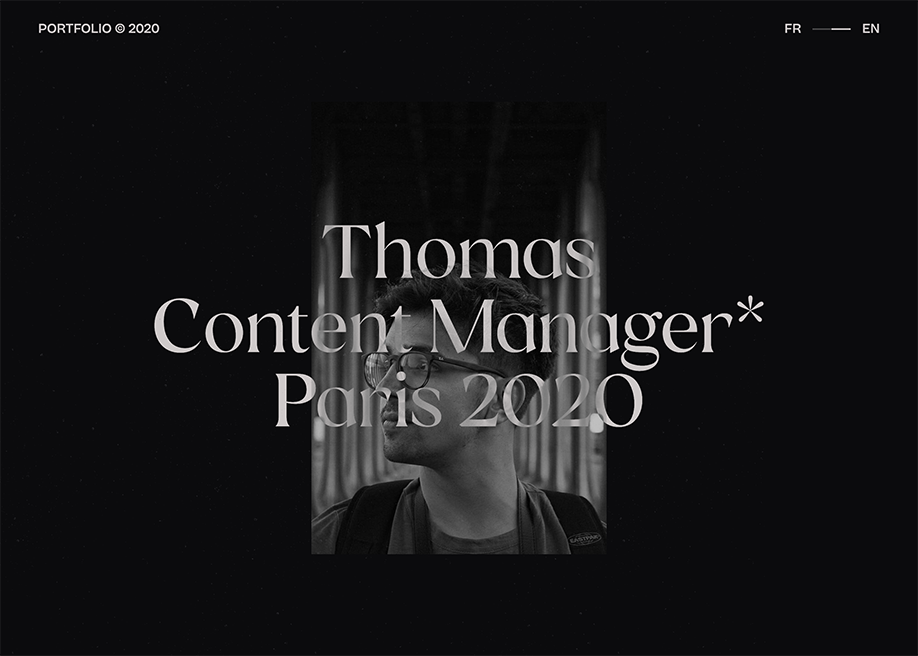
Thomas Bosc | Content Manager

The Death of User Interfaces
Dive into how product design has shifted towards a UI focus and how the AI “revolution” is gradually phasing out the “traditional user interfaces.”Hello, friends 👋It’s been a while, but life hasn’t been easy lately. Lots of work, thankfully 🙏This time, I’m discussing how I feel our beloved field of product design is changing and where it might be heading. To be clear, these are just my opinions, and I could be wrong (I most likely am), so please take them with a grain of salt. I’m no expert in futurology, and I wouldn’t stake my life on any predictions I’ll make below. However, I found thinking about it exciting, and honestly, it has been enjoyable pondering over it. So, I guess I just want to share these thoughts!Shall we begin?The Death of “Traditional” User InterfacesLife was simpler before “blinking RGB bordered buttons”… I remember when I started working on what I didn’t realize was product design. It was about 8 years ago when I launched my first startup, EzyCities. It was essentially a platform for booking experiences, similar to Airbnb Experiences, which, incidentally, edged us out of the market. Back then, I had to design the entire platform, both web and apps, all by myself 🤯. I started with Illustrator because it was easier for me at the time. Sketch was somewhat “new,” and Figma, although it already existed, wasn’t on my radar.Looking back, my job focused more on how people could quickly create and purchase experiences rather than on the app’s appearance or its components.I get the impression that product design was more concerned with the user experience and conversion rates than aesthetics, but maybe I’m mistaken. Don’t misunderstand; aesthetics have always been crucial for attracting users to a product, but I firmly believe they weren’t the top priority. Consider the major players back then, like eBay, Amazon, or Craigslist. Their focus was on making it fast and easy for users to perform actions on their websites, with less emphasis on minimalism, animations, and sleek components.It seems to me that a lot has changed in the last 8 years. We’ve reached a point where, sometimes, appearance matters more than functionality. This shift may be partly due to the increase in digital product offerings and some markets becoming saturated. However, I also attribute it to today’s “show-off” culture. Nowadays, it appears the shinier a product is, the more attention it garners, regardless of its functionality. Designers seek content for their social media, so a button with RGB blinking border animations gets more likes.Re-reading this, I sound like an old grumpy man lamenting the new era — I’m not (though I do have the back pain to match).Before you joke about my grey hairs, let me clarify: I appreciate a well-executed micro-interaction. What irks me are the “macro interactions” (have I just coined a term?).Have you ever visited a site or landing page where everything moves? It’s overwhelming, like a carnival without the food — the fun part. It makes me dizzy — and I assure you, I’m not that old.But let’s get back on track. I’m not saying animations or interactions are inherently bad; it’s just that we might be overdoing it a bit.Yet, I don’t believe designers are solely to blame. Users also play a role, as they now prioritize aesthetics over functionality. I’ve had friends tell me they signed up for services simply because they looked cool. While this underscores the value of design — we create cool things — it also highlights a part of our job that involves simplifying things and making users’ lives easier.The End of User InterfacesWhat a headline, right? It’s not entirely accurate, but I liked how it sounded, so it stayed.Let me explain…Lately, I’ve noticed a trend in digital products aiming to “erase boring internet tasks.” Software and apps like Arch Search and another one I can’t remember right now are designed to search the internet for you or perform tasks on websites using AI.For instance, Arc Search (the creators of that cool Arc browser) recently launched what they call a “Google competitor” (if such a thing truly exists), with the promise to “Find Everything, Faster.” Their software lets you enter a question or keywords, and it navigates and reads the top 3 or 4 search results using AI. Then, it creates a simple, text-based “site” summarizing information from those sources.Arc Search for iOSAnother software doing something similar is MultiOn, a new AI start-up that promises to “make daily tasks quicker and easier”. It basically does things for you in your browser, like booking cabs or getting groceries, so you don’t have to. You just tell MultiOn what you need by giving it a prompt, and it bypasses all the page's UI to do those tasks with little to no interaction needed from your side. You can watch how MultiOn works in this video.This shift towards functionality over form raises questions about the future role of UI design. If trends continue in this direction (which I could bet an arm it will), we might see a landscape where the aesthetic elements of a website become secondary to how efficiently a task can be performed. This doesn’t mean the end of UI design but rather a transformation. UI designers might need to adapt by focusing more on creating interfaces that integrate seamlessly with AI technologies, ensuring that the user experience is not just for users but also machines (and web crawlers).Imagine a future where UI design is not about the most eye-catching button or the slickest transition but about creating an ecosystem where AI and design work hand in hand to provide users with what they need before they even know they need it. The challenge for designers will be to innovate within these constraints, finding new ways to make the interface engaging and intuitive without relying solely on visual appeal.You might be wondering (as I was): What about the UI for these UI “killer” tools? Well, they would be among the last to shake up the UI world in the apocalyptic scenario of UI’s end — okay, I’m being a bit dramatic. But, returning to reality, if the AI revolution has taught us one thing, it’s how to achieve greatness without relying on complex or flashy UI designs. Consider these two examples from the leading AI innovators out there:ChatGPT: It’s essentially just a chat interface with a few buttons, nothing flashy, and almost no animations. Even their landing page is remarkably straightforward. Additionally, creating your own “version” of ChatGPT is done through the chat interface — no special UI for it.MidJourney: These guys embraced a minimalist approach to UI by not having one in the traditional sense. They use a third-party UI (Discord) to run their software. Even though they have millions of users and generate millions of dollars.Just want to highlight that both these platforms have gained immense popularity without depending on fancy visual effects like border gradients on their elements. Instead, they prioritize simplifying the user’s experience, saving them the hassle of navigating websites, using different software, or clicking through numerous buttons and links — emphasizing more UX than UI.So, while the provocative title ‘The End of UI’ might not be entirely accurate, it was meant to highlight a significant shift in our approach to and interaction with digital products. It might not mean that UI is dead, but that our concept and interaction with digital products are about to change.That’s not all…If you thought that this was “bad enough” for UI designers, wait until I tell you about Humane AI Pin and Rabbit R1…These aren’t characters from Star Wars but rather hardware and software that aim to eliminate your interaction with the “traditional UI”. Think of voice-activated devices that let you interact with websites, and APIs, read images, “click” buttons, “fill in” forms, and complete tasks. Yes, they can do all these things and probably more. It’s like if Alexa and Siri took AI steroids!To give you a better idea of what I’m talking about, let me quickly explain (or try) what both these pieces of hardware (and software, of course) do.Starting with Humane AI Pin: Released on Nov. 9th, this gadget envisioned by two former Apple execs is a visionary gadget aiming for a screen-free future. It’s a small device that clips onto your clothes and acts as a voice-activated assistant using AI. It can handle tasks like answering questions, making calls, and sending texts. It features a camera for recognizing items and providing information, a “Trust Light” for privacy awareness, and a mini projector for displaying visuals on your hand.Credit: HumaneYou can learn everything about it on the Humane website, or in this cool article about it.Rabbit R1 (my personal favorite), on the other hand, has more resemblances with a phone (even though it isn’t a phone), meaning that it will probably also have more “early adopters” (check my article on familiarity biases to understand why). It is a fun-sized, smart orange, and beautiful box (designed by the cool folks of Teenage Engineering) that wants to simplify how you use apps with the help of AI. It’s not a phone (they need to make this clear), but a personal assistant that fits in your hand. Instead of swiping and tapping on apps, you talk to it to get things done — like ordering pizza or playing music on Spotify, using a special AI to learn how to do tasks by itself. Plus, it can even make phone calls (not a phone).If you got as excited by it as I did, check out their website or watch their video presentation on CES 2024.So, now that you know about this, you can start worrying (I’m joking of course).What’s left for UI/UX designers?If you ask me to look into the future, I’d say the world of product design is about to see some big changes, but it’s not going anywhere. UI design, too, isn’t going away anytime soon. However, what we as designers focus on is going to shift. We’re going to spend more time thinking about how people interact with the data and features in our apps, rather than just making sure everything looks pretty.We’re also going to need to learn new skills or get better at things like voice control, sound effects, and haptics, which are all about how things feel when you touch them. It’s about looking beyond just the screen and buttons and thinking more about the whole experience someone has when they use our products. Plus, we’ll need to find creative ways to make our products stand out and be easy to use without just adding more visuals like flashy buttons, fancy fonts, and bright colors.Another big thing is that we have to design not only for people but also for computers and AI. This means we have to make our websites and apps easy for AI to use too, with writing that’s clear, links that make sense, and information that’s easy to find and understand.For someone who loves to learn and try new things, like me, all these changes in product design are pretty exciting. I’ve seen a lot of change since I started working in this field, and this is just another new challenge. The best part is, that product designers are good at adapting to new things, so I’m confident we’ll all do just fine with whatever comes our way.So, there you have it. Product design is changing, and we’ve got to change with it. We’re going to learn new stuff and think differently about how we design. But I’m excited, and you should be too. It’s a chance for us to do some cool things.I’m curious about what you think. How do you see the future of UI? Drop your thoughts in the comments.If you liked this article, please give it a clap 👏. It helps more people find it, and don’t forget to follow me here, X (Twitter), and LinkedIn. You’ll be the first to know when I post something new, and check my work (outside writing). You can also throw in some ideas for articles or just talk about design and products with me.Catch you later 👋The Death of User Interfaces was originally published in Muzli - Design Inspiration on Medium, where people are continuing the conversation by highlighting and responding to this story.
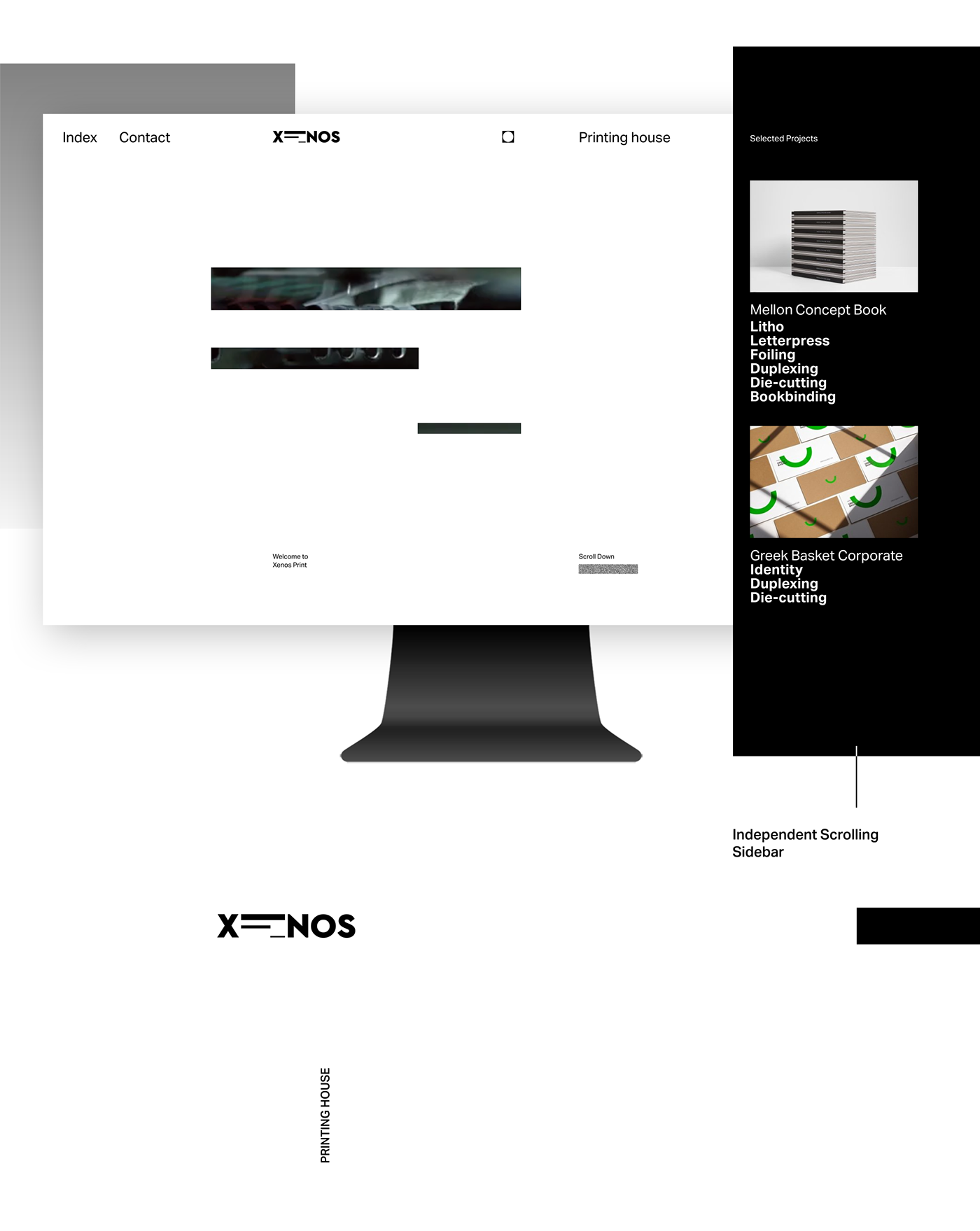
Xenos Printing House UI
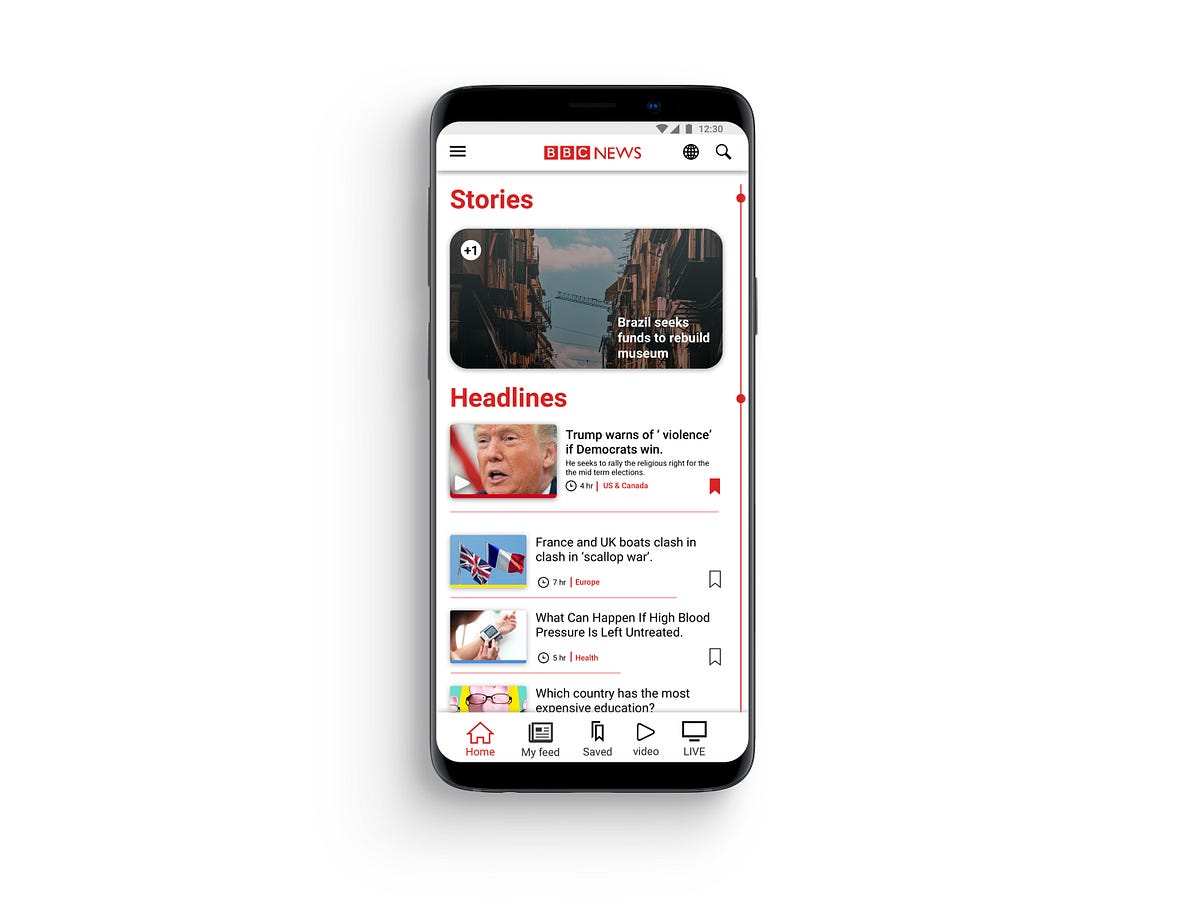
UX case study — BBC NEWS app android
UX case study — BBC NEWS app androidRecently I was searching for a news app which could pull news from around the globe. After stumbling upon BBC news app, which has over 10,000,000 downloads on play store. I thought, an app with this massive following should reward its users with a rich user-experience but BBC news app in its current state is strung together by some good ideas but heroically falls through on execution of these ideas.Problem and hypothesisReviewing other BBC apps in an attempt to understand the brand ideology and content representation across different platform, I found inconsistencies between their applications which is mostly caused due to conflicts in design guidelines provided by different organisations.I Hypothesised that by changing the user navigation flow and striking a middle ground for design standards, will give developers less headache while developing application while providing a more optimised and rewarding experience for the users.BBC android app.PersonaMy goal was to persuade a new user to use the app and turn him into a regular user. I envisioned a user persona who can be a potential user but avoided a specific user who will be a perfect candidate for their app or one who can be considered their core user.Job Story & ScenarioMy decision to choose job story over the user story was that user story has too many assumptions and doesn’t acknowledge causality. When a task is put in the format of a user story ( As a [type of user], I want [some action], so that [outcome] ) there’s no room to ask ‘why’ — you’re essentially locked into a particular sequence with no context. In contrast, Job story provides as much context as possible and focus on motivation instead of just implementation.framing design problem in a Job, focusing on the triggering event or situation, the motivation and goal, and the intended outcome.Guerrilla Usability TestingFor solidifying my hypothesis and to gather more data on the app from a user perspective. A small test group was given instructions to use the app for a span of three weeks. After three weeks I collected their verdict and overall experience. After analysing the data I found some interesting insight, Most of the users forgot to use the app after a while and didn’t feel motivated to use the app. The poorly executed navigation system was the major reason that the users felt lost and eventually lead to abandoning the app entirely.Identifying and Prioritising Pain PointsFor producing an optimal flow, I had to study and point out what is the pain point in the app. For finding pain points and organising the feedback in one place to get a view for the analysis of all data in one place I utilised affinity mapping.affinity mappingI collected data from the test group and my personal notes in the yellow sticky notes. All the feedback is gathered and arranged in the crude sections which make abstract sections/feature of the app. Blue notes represent a clear idea from all the input received from yellow notes. It helps to make note of all the useful feedback and combine it into smaller chunks for later inspection as we go from the bottom-up process. Each hierarchy represents a clear idea for the development of the feature in understanding the user needs and goal for the app set by the company. Doing this activity helped me to sort through all the comments to get a clear view of what is important for the user while satisfying business goals.Prototype and validationAfter getting a fair idea of what elements should be improved or gotten rid of completely. With help of affinity mapping, I was able to stay on track while experimenting with user flows and improving current UI design elements to fit standards proposed by Apple and Google. I took feedback on the design from my peers and tried to integrate their feedback in the design.1. finalising general layout and navigation bat .2.prototype for the index. 3. variation for stories.4. wire-framing different layout. 5. testing layout for article sectionAfter spending time with wire-framing, I moved to work on sketch to test the idea with much more fidelity. After getting an idea of the app will look in the static images I started to design HI-FI prototype in Invison.you can see and interact with the prototype here.Implementation#1 HomepageCurrent app does a poor job of delivering the content in an intuitive way. It depends on app bar for its navigation, using an app bar for navigation seems clunky and stale. It gets messy very quickly as you have to sort through myriad tabs to reach the desired topic.‘Home’ has to be the home screen of the app so it had to be welcoming and informative. To fulfil that goal I cleaned the UI and made changes to how categories are organised on the home screen, in original design spacing between the article were too tight as it resulted in an unpleasant experience where the user feels confined. Instead of just increasing the spacing, I opted for changing the layout. The Most popular article from each topic has the prominent exhibition in the section of that topic, thus headline of each section draws more attention. Each article has been marked with a tag from where the story belongs. The thumbnail of the story has a band beneath it to indicate its tag by colour. These colour tags are used in the BBC website to distinguish all the content quickly.#1.5 StoriesThe story is the distinguishing feature of the BBC app, But it was hard to locate in the original design. It just needed to be in the spotlight. To fulfil the requirement I put the story on the top section from where every user can see it in the prime spot. It could become a quick way to consume news as it is video-based content delivery in a short period of time. Having an indicator which notifies the user of new stories to make the stories more central element of the app and set apart it from its competition.#2 Navigation barAs I wanted a cohesion between android and Ios version of the app, Navigation should feel same and intuitive rather than just scrolling through tabs. Using a nav bar is the logical solution, as both apple and google support it in their guidelines. Removing the app bar navigation allowed me to allocate more space to the main activity. The navigation bar is divided in 5 section Home | My feed | saved | video | LIVE . Each section is the main feature of the app and now it is in front and centre of the app always at the user’s fingertips.#3 New navigation flowThe user still has to traverse through a myriad of topics, making navigation a painful and tiresome process. I resolved it by implementing a new system for navigation called ‘Index’. In ‘Home’ and ‘My feed‘ there is a line on the right edge of the screen. The index acts as a signifier instead of being an affordance for the user which can be triggered by tapping on it. The user will be carried to an index page where he could rifle through topics which are arranged in a linear manner. the index page gives an alternative, instead of scrolling in the home screen to get to a topic he can achieve the same result in less time. There is an indication on the left side to apprise the user of how many new articles had been affixed to the topics since the last session. The index is a more practical way to access the topics without cluttering the main screen with tabs.#4 My feedSetting up my feed was a very tedious task in the original design. My feed is a great feature of the app, I modified the interface which can bring some colour and playfulness to this screen but won’t distract the user. As you select the topics it provides more relative topics.In Old design traversing through tabs took longer than it needed, every choice that you have selected from my feed will be added to the main navigation. After a while main navigation feels like a dumping ground, I start to lose its purpose.The user gets confused and lost his way around the app quickly which cause the user to select few choices in order to keep the navigation clean.To overcome this obstacle, in my new design ‘My feed’ is similar to the home but has curated content where the home was meant to be more of a general place, My feed has the much tighter layout and packs more topics than home. It has a simple layout without making it difficult for the user to navigate to their favourite topics quickly using Index which is separate from the ‘Home’ section topics.Now there is a clear distinction between the two section and navigation for the two section.#5 Reading an articleReading an article is the most important thing in a news app. I chose a layout which will conserve the integrity of reading. The font weight is varied from the title to the main body to demonstrate different heading. Accessibility features are placed in the app bar for ease of reach. Share and save is led at bottom of the cover image which is most used feature while reading the article.SummaryJust by changing the layout and cleaning up the design to new standards of material design, makes the app more approachable and put the content that matter to the user and business to front-line without compromising anyone’s goals. The new navigation system can be a time saver when the user wants to reach to a topic very quickly. The changes made to the ‘My Feed’ are substantial and encourage the user to interact with it. After getting feedback from the same test group. They were impressed by the improvement in the experience from the proposed design for the BBC app.UX case study — BBC NEWS app android was originally published in Muzli - Design Inspiration on Medium, where people are continuing the conversation by highlighting and responding to this story.

Dating Apps: 6 UI/UX Design Tips for Modern-Day Cupids
Whether you admit it or not, our need to have a partner represents a fundamental instinct — the software created for us by Mother Nature. All of us are searching for a partner to march hand in hand into the future, complement each other, share the satisfaction, and enjoy life together.It’s also true that it’s hard for busy modern people to spend quality time searching for the right person. As a result, dating apps have become a necessary evil for millions. However, is it a real reason for creating dating apps?Technologies are changing the world. We’ve started communicating with them so naturally, that they impact our daily life in all its manifestations. And relationships aren’t the exception.The saturation of the dating app market. Get ready to struggleToday, millions of people meet each other online. As dating apps are increasing in demand, matchmaking mobile apps look like a promising business. However, the market is becoming saturated. From farmers-only dating apps to apps for people with the same musical tastes, there are millions of dating apps across the world. So, if you’re going to create one, prepare for competition.How to win a user’s heart with your dating app?Dating app developers and designers are the modern-day Cupids bringing love (short- and long-term) through their digital products to the entire generation. To build a dating app which is able to win a user’s heart you should keep abreast with what’s going on the market. Surely, to create a dating app you should follow the latest mobile app development trends. However, dating apps have some peculiarities. So without any further ado, let’s have a look at 6 tips that’ll help you build a dating app that’s fit for 2019.Build Empathy for the End-UsersYour tools aren’t only pixels and creative wit, but also a whole lot of empathy. As there is no universal rule on how to build relationships, the same can be said about dating app design. There can’t be a one-size-fits-all matching template or user experience design. All people are different.Dating app designers should have a deep understanding of the human psyche and mating models. To create a successful dating app design is not as easy as it may seem. You should virtually embody a user to tailor UI design able to interact with human feelings and emotions.Figure out the prototypical life situations to understand what kind of people are going to meet, why they decide to do this and how they agree on it. Your main mission is just to make this decision-making process easier for people.Tinder’s swipe left/right mechanics is a shining example of how people would like to behave in real life. You don’t know if someone has swiped left or not, so it’s not so stressful since you don’t have the fear to be rejected. And you don’t feel guilty too when rejecting someone. Instead, Tinder makes users feel good when they receive a match.Meet user’s expectations. Investigate how to match the right peopleNearly half of online daters are looking for someone they have something in common with. You can match people by interests or by things both of them hate. A shining example of this is the Hater app that helps meet people who ‘hate the same stuff.’ Badoo has a section where a user can look for their celebrity crush lookalike.Besides interests, there are also other matching options. For instance, Dine app has a very special matching style, integrating with Yelp. You can opt for three bars or restaurants and the app will offer you up to 5 matches who have chosen the same places today, so theoretically you can request to meet with a person right at this restaurant.Locali app offers a great solution for people who plan to travel to certain places. It founds matches around places you plan to visit.Give your users a feeling of safetyLet’s consider the Bumble app. It’s a great example of a women-friendly app. Here, women message first. Men have only 24 hours to answer after the match expires. There is also an option when one woman messages another woman. In this case, either party can respond first. However, you should consider some compromises, since not all men want to wait for the moment when somebody will message them first.Hinge app offers a wonderful solution for shy people who often don’t know how to start a conversation. Besides photos, users can include into their profile favorite food, two truths, and a lie or similar info tidbits. Such details help people to start the conversation by asking a question or commenting on something.This application has one more peculiarity — the two-tabbed interface that allows toggling between the chat and the profile. When chatting with someone you can come back to profile to check, for example, information about birth, dream vacation and so on.That’s not a secret, most of us aren’t honest in our profiles. Badoo app gives a great solution for it — a live video chat option for matched users. It helps to avoid stress caused by disappointment got when you meet a matched person in the real world.Pay special attention to a user profileSwipex app design by Fireart StudioA user profile should give enough information about a person and at the same time, it should be minimalist and not to overload a user with the long-filling forms. Do your best to make it intuitively understood.A user profile on Tinder seems minimalist, but does it really give enough information? On the contrary, Hinge app’s users should fill out long forms, but it allows to create a very detailed user profile. The best option is to keep a balance between Tinder’s minimalism and Hinge’s too detailed user information.Anyway, there are some core components that are obligatory on a dating app’s user profile such as photos, age, gender, interests, and other information that users might like to share.Design the messaging logic wiselyCredits to InVisionSo, you received a match. What will happen further? Communication, of course. Messenger is one of the most important things in the dating app’s UX and UI design. Design it wisely. You can use push notifications in order to prevent users from missing out on a possible romance. Another great option is smart real-time alerts about events within your application such as messages, matches, reminders, etc.Set the right mood with the color paletteIf your dating application promotes hot and passionate relationships, then consider red-color palette in your visual design.However, you can play on the safe side of happiness by using yellow colors like designers of Bumble app have done. BeLinked, an app connected to Linkedin, creates the mood of more serious relationships built on trust, thanks to a purple-red UI design. If you’d like to motivate your users to build efficient and long-term relationships, try to use the green palette.Final thoughtsInvest in the uniqueness of your dating app in order to get a chance to stand out of the crowd of Tinder’s clones.Dating app designer’s mission is very important in the modern-day world. According to The Economist, dating apps increase the rate of interracial marriage. One-sixth of all first marriages are via dating apps. And 70% of same-sex relationships start online.You can create a digital product that opens up a chance to feel pleasure, necessity, and even love. These aren’t just positive emotions. We’re talking about feelings that are fundamental for building a better future and raise our overall satisfaction from life.Dating Apps: 6 UI/UX Design Tips for Modern-Day Cupids was originally published in Muzli - Design Inspiration on Medium, where people are continuing the conversation by highlighting and responding to this story.

High-Voltage Buttons, AI Assisted Design, and an Animated Airplane Mode
This week's CodePen community highlights include a couple of answers to Andreas Storm's electrified button tweet, a UI design mockup assisted by Midjourney from CJ Gammon, a css-doodle inspired by ChatGPT branding by yuanchuan, and a high-flying airplane mode toggle from Jon Kantner. Plus, Fabio Ottaviani brings us a "Supah" slick travel carousel, and on our latest podcast, CodePen co-founders Chris & Alex chat about the pursuit of "solving problems forever". Carousel with drag and wheel "No frameworks, no fuss – just pure and fast performance, powered by CSS variables." Fabio Ottaviani shares a positively gorgeous travel carousel with smooth scroll and drag features. AI01: Vista CJ Gammon gets a pleasing pastel design assist from Midjourney in this UI mockup, created as part of a "collection of interactive interfaces designed and built using AI". Check out CJ's YouTube walkthrough of the process for insight on how it was made. ChatGPT Plus Cover yuanchuan recreates the noisy minimal art on the ChatGPT Plus website with the splendid css-doodle web component. Click to generate a new pattern inside the lines. Gravity Cursor with :has() Jhey Tompkins makes clever use of :has() in this cursor-grabbing Pen. The trick is using ":has() to detect when a galaxy is being :hovered and set the custom cursor coordinates". CSS only image switcher "A CSS only image switcher powered by the :has() selector and a few CSS variables tricks. Click anywhere on the image to update it. The animation effect depends on the cursor position." From Temani Afif. Andreas Storm button jwktje takes a crack at Andreas Storm's high voltage button challenge with SCSS. See also: Team GreenSock's rendition. CodePen Radio #399: Data Munging On the latest CodePen Radio, co-founders Chris Coyier & Alex Vazquez chat about the ideal of "fixing problems forever", and what it's like to actually try to do that while fixing a data problem. #CodePenChallenge: New Color The final week of the January "New CSS" challenge was all about color! Browse through our colorful collection from week one, including Pens by Max Swann, Ashraff Hathibelagal, David Aerne, and Andrii Rodzyk. Airplane Mode Animation Get ready for takeoff with this fun airplane mode toggle concept from Jon Kantner, complete with puffy contrail clouds. Kate Rose Morely's 12bit rainbow pallet Explore swatch samples of the colors in Kate Rose Morely's 12-bit rainbow palette in Jim Roberts' Pen. The color palette "uses a 12-bit color depth, so each color requires only four characters when specified as a hexadecimal color code in CSS and SVG". Glitchy Circles move and distort behind glitchy lines in this canvas animation from prisoner849. Sit back and watch the scene shift and glitch endlessly. Typography Poster #3 Paulo Nunes brings us a little dose of "Fluid-typography, grid and the cascade". This is the third in a series of typography demos from Paulo; check out #1 and #2, too.

Learn fundamentals of UI design through cinema
Movies have been prevalent among our society as a form of art long before people started to study visual design or simply, design as a discipline. The first-ever film was released in 1888, called Roundhay Garden Scene, which was a short silent actuality film (2 seconds) recorded by French inventor Louis Le Prince.Since then the world went through many revolutions, wars, inventions, and pandemics. Each of these events made a special impact on the film industry as a whole one way or the other, making it what it is today.With the evolution of visual communication comes visual design. Since ‘design’ actually refers to problem-solving and more than just creating appealing artifacts, and every problem-solving technique has some fundamental laws/principles/theories/formulae, based on which that technique is approached, so does visual design.Soon after the evolution of cinema(~100 years) as a commercial industry as well as an art major in colleges, people started booking tickets for the shows using digital devices with interfaces. Now, these devices have to be made easier to use and learn, which in itself was a problem. To overcome this, a new design discipline came into the picture, namely User Interface Design.Now, this wasn’t exactly the cause that led to giving birth to a whole new design field. But, it is indeed one of the many ways by how cinema and UI design are connected. Let’s jump straight to understanding the very fundamentals of UI design with some of our favorite films.BalanceIt is a very common thing that can be noted in any stable design unless it is explicitly made out of balance.Balance can be understood as the distribution of the visual weight of objects, colors, textures, and space. If there is a lot of content on the screen then it should be balanced to make a design feel stable.Now, symmetry is one way to achieve balance in visual design. Nature loves it, and so does our eyes. Symmetrically balanced elements help to reduce the noise from the image and make it familiar to us.Cinematographers have been using symmetry as a powerful tool for a very long time to capture visually stable shots in movies. But balance can be achieved in non-symmetrical images as well, with the help of colors, objects, space, and texture.Similarly in UI, to make it balanced, elements are placed accordingly on the canvas as per their weights to visually stabilize all the objects present on the screen.Balance in user interfaceEmphasisWe see emphasis used in most fields of design, including architecture, landscape design, and fashion design. Similarly, it is an obvious thing to be noted in filmography as well. Filmmakers use all sorts of techniques to put the light on the subject they want the audience to look at.Emphasis is a strategy that aims to draw the viewer’s attention to a specific design element. That could be to an area of content, to an image, to a link, or a button, etc.In cinema, the use of focus, contrast, etc, can be found to create emphasis on an element on the screen. This is done to convey a part of the story relevant to that emphasized object.Now, UI Design also has storytelling just like any other designed object. When we want to put an element in focus, we highlight it using any of several methods to convey what we want it to convey and to stand out among the rest of other elements.Emphasis created in UI designHierarchyThe meaning of cinema differs from person to person. How we conclude a film is dependent on the form of art we have been consuming over time and how it has framed our perspective. This is not in control of the filmmaker but they can control to drive our eyes from one point to the other by understanding simple behavioral patterns.Hierarchy is the control of visual information in an arrangement or presentation to imply importance. It influences the order in which the human eye perceives what it sees.In every film, makers apply some form of hierarchical pattern to drag the audience’s eyes from one point to the other. This is usually done to tell the story in a required order.When users interact through screens, it becomes important to drive their attention in the right order. What comes first in order needs to have a connection to its successor element for a good design, and so it needs to have with its predecessor.Most of the apps and websites we browse apply the same principle to arrange the elements in the right order. The parent element is usually placed either on top of its child or left to it.Elements arranged according to their hierarchyRepetitionAs humans, we tend to stick to rhythms more when it comes to finding patterns in unknown objects. Rhythms in image, sound, videos are formed with the help of repetitions in the arrangement of elements on screen.The principle of repetition simply means the reusing of the same or similar elements throughout your design. Repetition of certain design elements in a design will bring a clear sense of unity, consistency, and cohesiveness.It is as significant in cinema as it is any other design field. Filmmakers use repetition of elements to form a visual rhythm. Pattern is simply a repetition of more than one design element working in concert with each other.In Nolan’s films, someone with an eye for design can easily notice how beautifully he manages to hold the narrative with visual rhythm, whereas Wes Anderson is louder with his rhythms and audience who are not aware of these design principles can as well easily locate them.Similarly, repetition in interfaces creates a visual rhythm which helps user to find patterns, hence making user stick to the platform i.e. more engagement. Listings, menus, posts, etc are some of the sections where repetition is evident.Repetition in user interfaceProximityWhen we are watching a story, it is important to understand what it represents to articulate a meaning out of it. Proximity in cinematography plays a vital role when something has to be segregated from the rest of the things to put it as a central subject for that moment.The principle of proximity is the process of ensuring that related design elements are placed together. Close proximity indicates that items are connected or have a relationship with each other and become one visual unit that helps to organize or give structure to a layout.In cinema, this can be done using colors, focusing techniques, and object arrangement. Here are more dimensions available to filmmakers as they have z-axis to help themselves.However, even though with the evolution of 3D in the user interface, most of them make use of 2D layouts so it can perform easily on any screen. Therefore, space, styles, and shapes become significant while creating proximity within objects in the user interface.Proximity in user interfaceProportionUsually, on canvas, there can be a lot of elements that are placed taking up any proportion of the screen. But, it has to be made sure that the amount of space on canvas they take during a moment has strong significance with its relevance to the story, that’s good design!Proportion is the relationship of two or more elements in a composition and how they compare to one another with respect to size, color, quantity, degree, setting, etc.; i.e. ratio.If a particular element takes more space than needed then it directly impacts the hierarchy and fails to make an impact or even convey what it has to. A character or an object is given the required amount of space on canvas as needed for the story at that particular moment, so does elements in the user interface.It would be really awful if the support chat box takes up the same width as the nav bar, or amazon’s logo takes up the same space as the search bar. Proportion has a direct connection with hierarchy. Both of them play their roles in supporting each other along the story-line.Proportion in UI designAnd that’s how we understood the principles of visual design through cinema. The movies that I referred to are some of my favorite ones and would recommend you to watch them if you haven’t. I keep looking out for these principles in any movie I watch. I’d recommend you for any next movie/show that you’ll be watching after reading this, pause the video where you think the visuals are beautiful and do a quick analysis of why it looks so good, does it have any of the above six principles or the filmmakers were shooting blanks. I guess it has now become a little more clear about how all design disciplines are interconnected.Fun fact: All six phenomena exist in UI as well as film examples I referred to, even if they might not have been directly talking about them. If you missed go check it out again, its fun.If you’re a film geek or a design geek like me, do share this articles with your friends. Your claps give me motivation to keep writing more, and would love to hear from you in the notes :)Let’s talk more on LinkedIn.Learn fundamentals of UI design through cinema🎥 was originally published in Muzli - Design Inspiration on Medium, where people are continuing the conversation by highlighting and responding to this story.
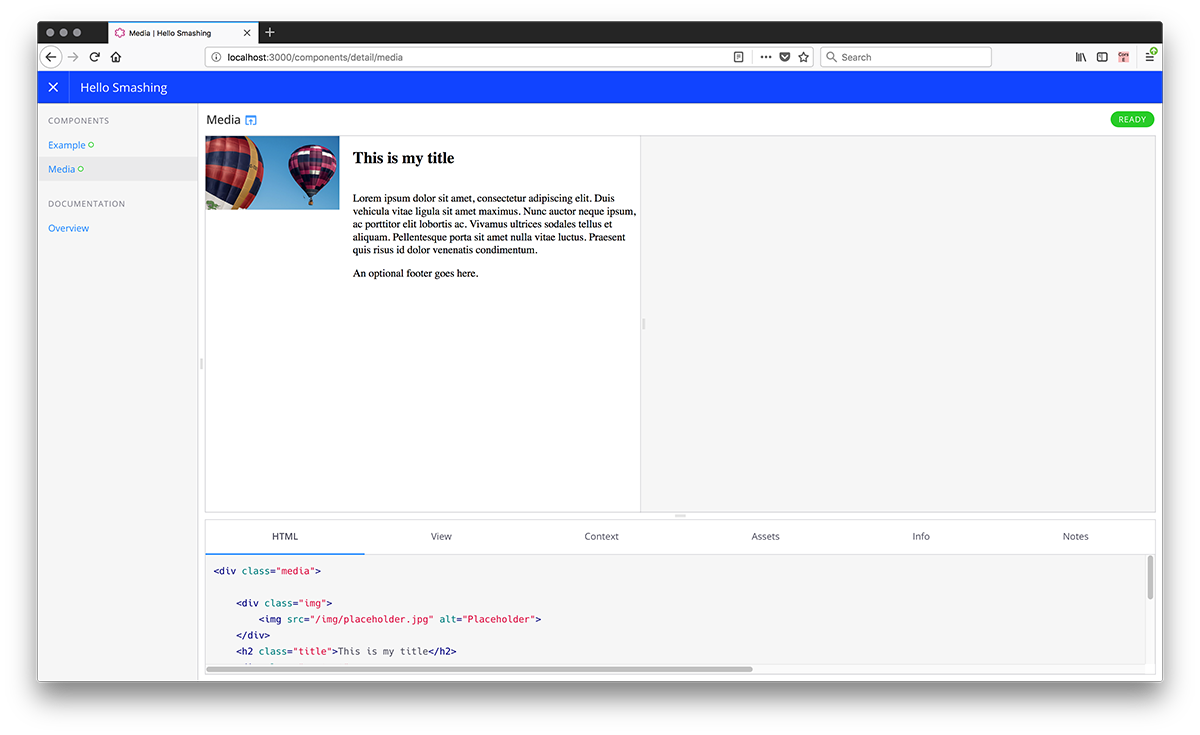
Pattern Library First: An Approach For Managing CSS
Building an adaptive favicon
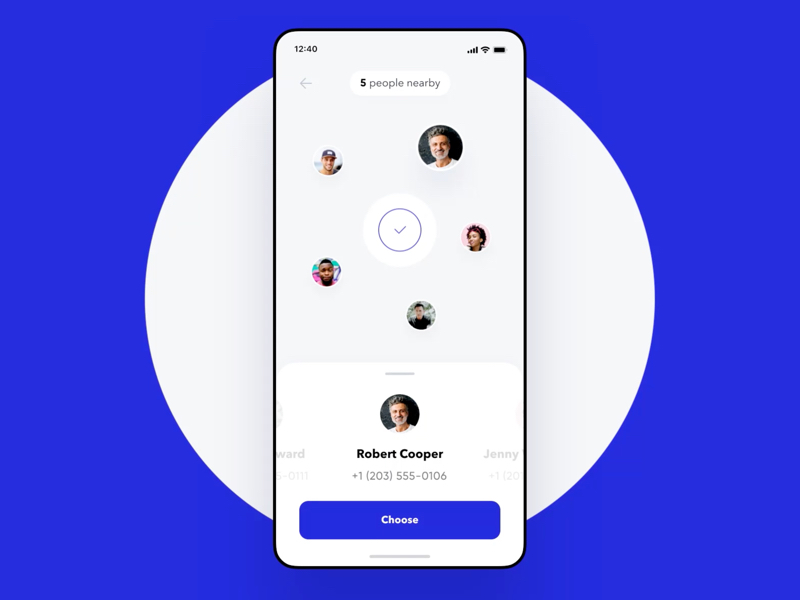
UI Interactions of the week #196

Why Most UI/UX Designers Fail Before They Even Open Figma
Hello there, designers! 👋 Asking the right questions before starting a new project has been a game-changer for me.I know it’s easy to skip the chit-chat and go right into Figma, but trust me: with over 6 years of UI/UX experience, I’ve found that the right questions are the building blocks of every successful design project.They’re like the GPS that stops you from driving off a cliff — or at least into an area of endless revisions.So take a coffee and let’s talk about why this is important, what questions to ask, and how to ask them like a pro.I’ll even cover some stories and pro suggestions that you can use. Ready? Let’s go!👀 Don’t just stare — Click & follow!Why Most Design Projects Fail (And How to Avoid It)Over two-thirds of projects fail because no one tries to get everyone on the same page from the very start. What about the fallout? Wasted time, money delays, and confusion lead to a cooked mess.I’ve had the experience of designing a feature only to discover that it couldn’t be built because of an unknown old system. Oof.Here’s where questions come in handy. Asking the correct questions at the start helps to avoid unfortunate events by setting targets, sharing limits, and keeping everyone on the same page.Do you want an idea of what I’m saying? Take an infographic titled “The Cost of Skipping Questions”: one side shows a smooth project schedule with smiling people (time and money saved), while the other shows an irregular pattern of delays and dollar signs flying out the window (chaos and rework).Spoiler: you want the first one.Here’s my tried-and-true checklist of pre-project questions for designers.I’ve divided them into six main groups (plus a few more!), with detailed examples and an explanation of “why it matters” from my personal experience. Let’s go in.1. Project Goals & Business ImpactWhat is the main business goal? (e.g., boost conversions and decrease abandonment)What is the one statistic that defines success in this project?Who are the important stakeholders, and what do they expect?Why This Matters: I previously thought that the client cared more about aesthetics than their value, but talking about goals early saved me from a complete revision.Pro tip: Ask stakeholders what are their top goals. Unresolved problems here could put at risk the project later.2. User Research & Target AudienceWho is the main user group? (Age, location, behavior, and pain points.)Have we done any user research or surveys?What are some common feedback from consumers in this industry?No personas? If you can do a quick user interview that would be helpful.Pro Tip: For a recent SaaS project, asking for user personas upfront led to an onboarding flow that users loved.3. Competitive & Market AnalysisWho are the top competitors, and what works well in their UX?What makes this product/service stand out?What 3 things do users hate about competitors’ products?Should we follow industry trends or break them?I’ve seen projects fail because no one asked about competitors — don’t sleep on this.Explain your response! This can help set your project apart.4. Project Scope & DeliverablesWhat specific screens, pages, or features are needed?Which platforms will this design run on? (Mobile, Web, Tablet, SaaS)Are there any tech stack limits or frameworks to consider?What is the needed level of interaction and animation?These questions once helped to clarify a confusing feedback loop during a tight deadline contract.5. Content & Branding GuidelinesDo we have a brand style guide? (Colors, typography, imagery)What type of content will be included? (Text, images, videos)Is there a tone of voice to align with?Who’s handling copywriting and image selection?I continually confirm content timelines — once, a “rush job” delayed because no copy was available.6. Development & Technical ConstraintsWhat tech stack is the dev team using?Are there CMS, backend, or third-party integration limits?What’s the performance/load time standard?Invite a dev to your all meetings at least once a week. I once designed a feature that couldn’t be built. 🤦Bonus 7. Post-Launch & Iteration StrategyHow will success be measured post-launch? (Metrics, A/B testing, Heatmaps)Is there a plan to collect user feedback?Will there be continued design support?Pro Tip: Asking this shows you’re thinking long-term — it wows clients every time.How to Ask Questions Like a ProIt’s not only important to ask, but also how. You don’t want to sound like someone who is questioning someone suspicious, right? Here’s how to get meaningful responses without feeling awkward:Collaborative Speaking: “What’s success?” vs “How can we define success together?” It is less combative and more team-oriented.Timing Tips: Set goals at the very start and save limits for planning sessions.Go more deeply: If they reply, “Make it user-friendly,” ask, “What does that mean for you? Do you have an example?Building trust is the goal, not just giving answers. Do this, and you’ll be the designer everyone wants to work with.Personal Trick: I usually ask for examples of designs they enjoy (or dislike). It’s related to a cheat code for aligning expectations.Pro Mistakes to Avoid (Lessons from My Experience)I messed up so you didn’t have to. Here are two important ones:Mistake #1: Assuming Stakeholders Agree on GoalsArrange a “Goal Prioritization” voting session during the start. When the top three goals are not aligned, it serves as a warning sign.Mistake 2: Skipping Technical Chats with Developers.Involve a developer in discovery meetings. I once planned a feature that could not be built because of CMS limitations, resulting in a whole redesign. Yikes.How to Scale This Process (For Agencies & Teams)Have a team or agency? Here’s how you make this work:Document everything: Set up a “Project Kickoff Hub” in Notion or Confluence to collect all answers. It’s a lifesaver for onboarding and mid-project updates.Mentor juniors: Teach them to ask “Why?” five times to get to the bottom of the problem. It improves critical thinking fast.Template it: Here’s an email-friendly stakeholder interview starter: Subject: Let’s Crush This Project- Quick Questions to Start Body: “Hi, [Name], I’m excited to get started! Could you please share your opinions on [insert 2–3 critical questions] to ensure that we are on the same page?After 6+ years of improvement, this strategy is quite working.Final WordsAsking the correct questions not only avoids disasters but also helps you to do well. This approach will help you create better designs, stay on schedule with projects, and wow customers (and colleagues).Try these on the next task and feel the difference.Choose 5 questions from this list, apply them to your next project, and then tag me on Instagram with the results for a free design review!Oh, and what is your must-ask question? Please share your thoughts in the comments section below; I’d appreciate hearing them!Thanks for reading! If you enjoyed this post, give it a clap and follow for more content.……Want even more inspiration?Follow us on social media for your daily dose of design, innovation, and creativity right in your feed!Linkedin | Instagram | TwitterWhy Most UI/UX Designers Fail Before They Even Open Figma was originally published in Muzli - Design Inspiration on Medium, where people are continuing the conversation by highlighting and responding to this story.
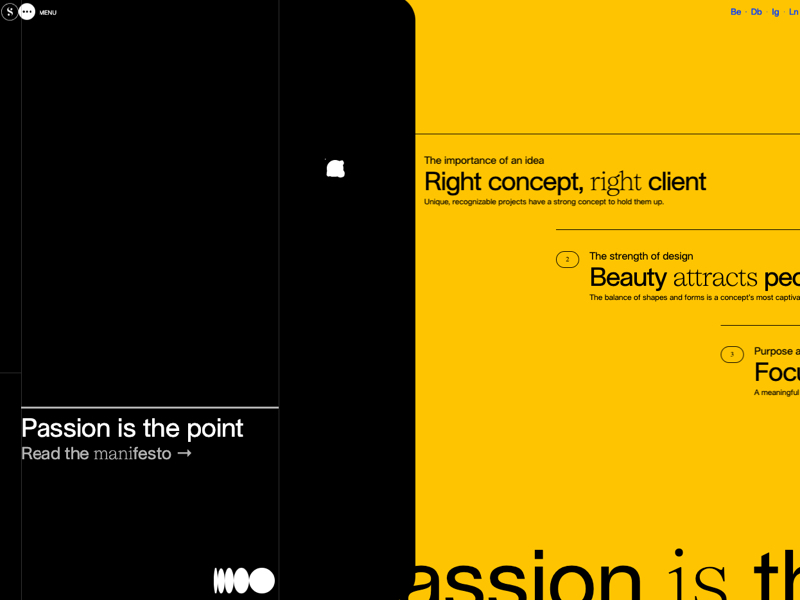
Silvia Sguotti
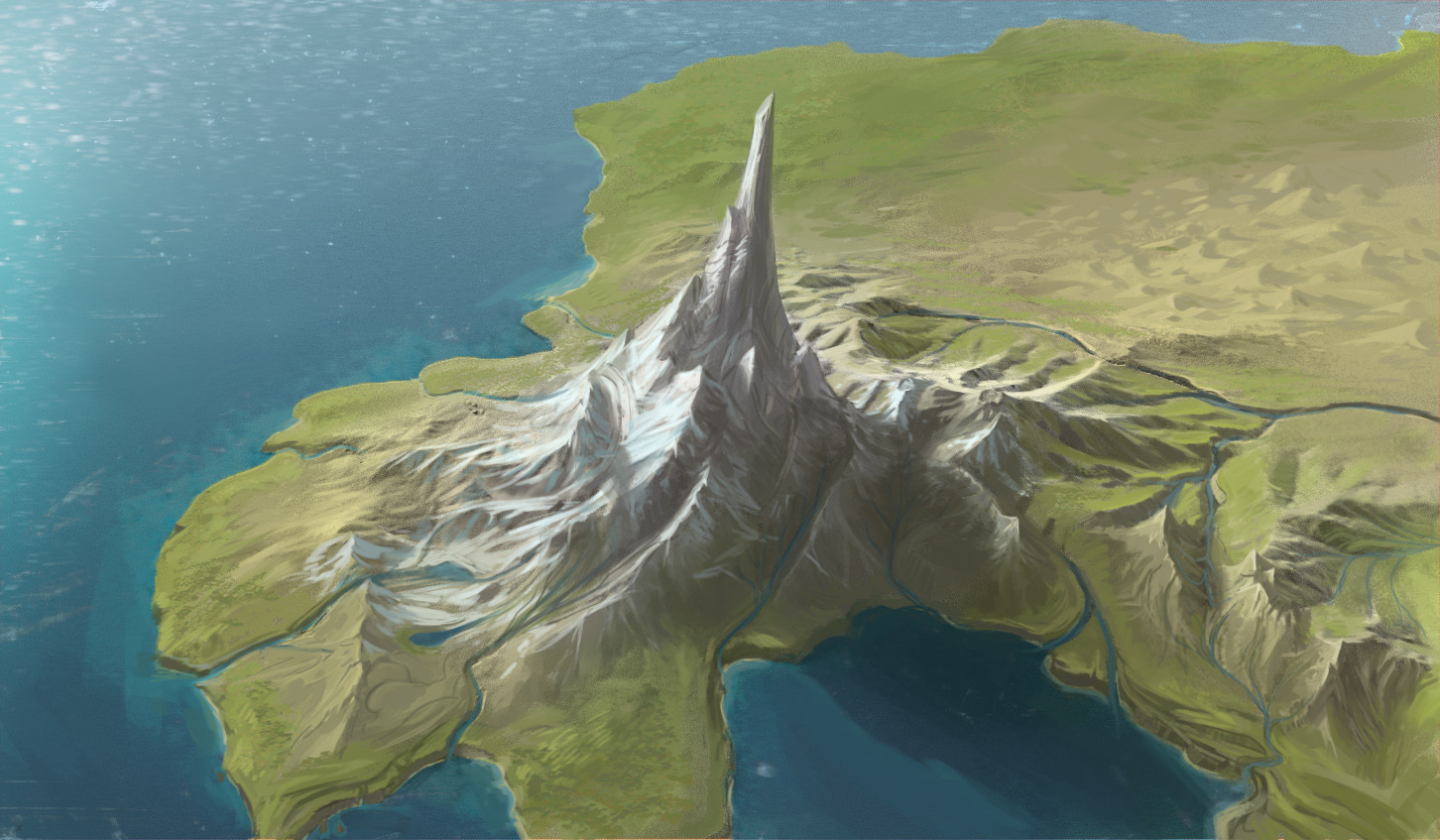
Runeterra Map Visual Explorations by Efflam Mercier
Concept art and look development of the interactive WebGL Runeterra Map. These we used to define the art style, chat with the UI/UX artists and build up a style guide for outsourcing. Link to WebGL map : https://map.leagueoflegends.com/en_US Launch Trailer: https://www.youtube.com/watch?v=MaDfg5BhIcY

Ultimate Telegram redesign
Introducing the new Telegram. We have tried to rethink the current Telegram in such a way as to bring the user interaction with the application to a new level. In particular, added new functionality, gesture control, user interface has become cleaner and more attractive.

Airbnb Wishlist Revamp-Collaborative trip planning made easier (UI/UX case study)
My process and solution for improving the wishlist feature to help you and your friends plan trips on Airbnb.It’s the season! Everybody’s stepping out of their homes, backpacks ready, flight tickets in their hands, hotels booked, and hearts pumped up with excitement. After a long fight against the pandemic, things are finally getting a bit back to normal, and people are already on long-overdue trips with their friends.Illustration courtesy: Me💃Obviously, I’m filled to the brink with jealousy, looking at everyone’s Insta stories and Snaps of people on their crazy adventure. I swear half the people I know are holed up in Manali or Rishikesh, while I’m stuck in my dingy room. But it’s okay. Apna time aaega. 🙂👍So it’s no surprise that I started my UX journey with something related to travel. I found it to be a relevant field to tap into because the travel industry will boom once the pandemic abates, as people(like me) are very eager and ready to go out after being confined at home for a long time. Thus I began to look for what relevant problems I can address and decided to go forward with the challenge:How a group of friends can plan and book their mutual tripI decide to solve for this on the Airbnb platform, as it is an app used primarily by the millennial and Gen Z peeps, and I have better access to them, making it more relatable.Heads up! Please do view on a bigger screen(preferably desktop) for a better experienceLet’s understand the ProblemIt’s summer vacation, and Satabdi and her friends want to beat the heat by escaping to Ooty🛫🔎They are looking for places that are unique and homely and want to stay away from the crowd, so they decide to search on Airbnb🧐 Satabdi opens Airbnb to look for suitable homestay options💬 She finds one that she likes, and she shares it on the group chat on Whatsapp🙅♀️ Her friends have multiple opinions on it. Some want to stay in a place that offers a different experience, some are not sure about the pricing, and some want more options🤓 So Satabdi again goes back to Airbnb to look for more hotels and shares more options on the group. Her friends have also done the same👀 Now there are so many options! It’s becoming difficult to navigate as they have to click on the link repeatedly and go to the app to know what features the stay provides⏱ This whole process is messy, which leads to delay in decision makingThis is the ideal problem-story that I thought a typical user would face. Then I realized that this can be assumed for every app, not particularly Airbnb. So to get more in-depth understanding, I would need to go through the app thoroughly and also get the opinions of other users. So on to the next step - Researching!🔍1. App Analysis📲I have used the Airbnb app before but had never gone in-depth in finding out what features the app has to offer. So I began exploring the whole discovery and booking process.The whole process is pretty seamless, but I’m pretty much sure that there’s no step in the process that includes any form of collaboration. Or is there?I found this little thing which kinda misses the eye, termed as Wishlists!Wishlists feature in AirbnbTurns out that Airbnb has already worked around bringing collaboration into the platform by introducing wishlists, where you can:Like stays and save them in one placeSegregate different stays in different wishlistsInvite friends to view and add to the wishlistWishlisting in AirbnbWishlisting is pretty easy, and you can compile some of your favorite places in a jiffy! But in contrast, inviting is not as intuitive. The invite option is hidden inside the three dots (googled it, it’s called vertical ellipsis), and as such, the page itself gives no indication that it can be shared or that you can add friends.Inviting via the ‘send an invite’ optionInviting via the share iconThe key reason may be that Airbnb didn't prioritize ‘inviting’ here, putting more focus on ‘wishlisting’, but my main aim here is collaboration, I feel that this flow needs more hints that the user can pick up easily to facilitate the same.2. User Research👥Since I am working on improving the experience for a group of friends, I need to directly get the feedback of the people. So I whipped up a google survey form and shared it across my peer network. I got my feedback from more than 80 people, who were largely in the age group of 18–24.The key questions were:What are the challenges for planning group travel (with friends, family) when using a travel app?Which form of the decision-making process do you like best?Do you know of the “Wishlists” feature in Airbnb and that it can be shared with other people? If you haven’t used the share option, why not?Important Insights🔬It’s not easy to choose anything in the initial stage when considering everyone’s choices! It makes more sense that people choose whatever they like and then put them in a single place where they can communicate and proceed furtherMaking the final decision is a tough thing. Even the user is in conflict whether they prefer to vote unilaterally or give the decision-making choice to a single person(leader)The wishlist feature was introduced with the aim to let people come together and create an inventory of their favorite places, but it goes largely unnoticed! Among those who know about and use wishlists, only around 9% actually knew they could share it and invite people into the listThe last insight also answers our previous question “Airbnb has already worked out a solution, why are we still here?”The answer: It’s not functioning the way it should😕Most people do not use wishlists, and the few who do are not even aware of the working of wishlists with its share/invite option, owing to its poor discoverability.Wishlists just seem like a place to store your favorite stays, and there isn't much encouragement to share it, thus keeping the users in the dark about what they can do when they share the list.How do we proceed from here?🏃♀️Whichever way you try solutioning, the key thing is for there to be an enhancement in the experience. This can be in the form of introducing a whole new feature or improving upon an existing one.For this situation, it’s better to ideate upon the Wishlists experience as:Improving on an existing feature has the advantage that it has a lesser learning gap than introducing a new feature altogether.People are not very comfortable with big changes, and thus this seems a more viable option.Airbnb has tried to solve this problem with the wishlists thing, which is a smart move, but the execution part has been a bit lacking, or maybe it hasn’t been explored properly yet.The conclusion I came to is to iterate upon the wishlist feature and include some more options which are multitude-focused.Goal🎯I got the general idea of what I wanted to do, and in a nutshell, it would beUpgrading the Wishlists feature by :improving discoverability👓building a comparison matrix📃guiding users to help in making a decision🏹integrating a chat option💬Let’s see how well I can accomplish these!Ideating and Sketching ✍OK, to be honest, I jumped on making the UI rather than sketching out my ideas-like a total noob. Which was a huge mistake. What could’ve taken me a few days, went on for weeks, till I was berated and told to go back to the basics. It was then I started creating the User flows and Wireframes for the application. I integrated the flows with the wireframes to get a better understanding.Learnings: User Flows are a visual representation of the path the user can follow to achieve a goal. Wireframes serve as visual guidelines for the design of a given page on a website or app. In practice, you might want to use wireframes as a tool to help you illustrate user flow. It’s easier and wiser to make changes on this level because it saves you time and energy from making more costly changes later on.I didn't 100% follow what I'd sketched out, neither were my user-flows strictly accurate in the conventional sense, but it gave me a clear vision of the general working and where I wanted what. This made the UI building process much simpler!User Flow+WireframingHow did I solve:Improving discoverability👓I didn’t do anything extravagant. Airbnb is still one of the leading platforms with a great design that connects travelers with awesome homestays. So maintaining the initial flow of the discovery process was non-negotiable. But encouraging people to use Wishlists was the first step to help them explore the feature and discover collaboration! So it was important to bring attention to this thing.When you land on a stay’s screen, a tool-tip (with visual contrast layer over the screen) pops up to let the user know about the feature and what it offersThe whole flow of searching for rooms stay the same, and this pop up will appear only for a few seconds, which can also be closed by the user by tapping anywhere on the blacked-out screenThe invite button is taken out of the ellipsis and displayed just beside it, giving a clear indication that this list can be shared,The rest is the same as the original invitation procedureThe people in the list are displayed instead of the invite button once they have joined and can be accessed and edited by directly clicking on itBuilding a comparison matrix📃One would think of displaying the selected listing side by side so that users can directly compare. But doing that in a mobile app is tough because of its limited real estate. The list might get overwhelmingly long, or some details might get lost because of too much visual overload. Thus filtering options based on important criteria is the best option in this case.Added more filter tabsThe ‘Dates’ and ‘Guests’ criteria were already present, so it wasn’t too much of a sweat to add more, following the same hierarchyHere, I have introduced ‘Locality’ and ‘Amenities’, as they are the most important things that people search for while browsingLocalities tell us about the areas present in the list and you can choose from themAmenities will have the whole list of different facilities that are available/not in that stayDifferent options to filter choices fromFilter tabs and amenities shown after picking criteriaThe selected options are highlighted in the same filter tabs for dates, guests, and localitiesThe listings will be displayed in the descending order of which stay satisfies the most criteria to the leastBeneath every stay’s card, the corresponding amenities will be displayedI took the decision to only show the amenities that are not available+the ones that need elaboration, cuz in the case of a user selecting 10–15 options, it will create a mess displaying all of themGuiding users to help them make a decision🤝We all are creatures that value our own opinions. But we still need to come to a point where we have to agree on something, otherwise that trip to Goa will still be pending, even after 1.5 years.I did consider putting in a voting mechanism, but that won't be of much help cuz there are always more than 1 places that a person likes a lot, and the chances of two or more places getting the same number of votes is pretty high. A simple indication that a person likes a place is enough just to figure out which places are liked by the majority, after which they can be discussed out and decided upon.1. Viewing other group members’ likes💖Like button showing how many people like that stayThe number of likes a stay gets will be indicated as shown above, and will only be visible for the particular wishlistThe stays in the list will be sorted from the most likes to the least2. Integrating a chat option💬Chat in Airbnb!The Chat option is shown beside the Map button, as they come under the same hierarchy, and is also easy to access at the bottomThe red circle indicates that there is a new unread chatDifferent wishlists will have different chat histories, the primary function of chat here is to communicate and decide on which stay to choosehttps://medium.com/media/7d717d8d766d0f0b88e331ca2f5cdc93/hrefThe chat mechanism is pretty basic and inspired by that of Pinterest, with no function to add external images/videos as it is not fundamentally needed hereThe only added option is the home-heart icon that inserts the homestay’s detail card in the chatbox. This will be needed from time to time so that they don't have to go back to the older message where the homestay was first brought into the chatThe page that pops up on clicking the home icon will display the stays that are on the wishlist they are currently on, as well as a ‘Recommended’ section that will show stays similar to the ones on the wishlist, wrt. to location, criteria selected, etc.The purpose of the chat option is to facilitate communication here, i.e., it might not be used much after the trip planning has been completed, and thus made with that simplicity in mind.How is it reflected in the booking process?So eventually, you all have decided on a place that suits at least the majority! Woohoo!But still, there are so many questions:Who books the place? Will the trip booked show up in everyone’s profile? How will I know that the trip has been booked if someone else has done it?Fret not, simply adding the place to a wishlist while booking will do the trick! And yes, it will show up in everyone’s profile, as long as they are part of the same wishlist.https://medium.com/media/68ab99b8bf1e3a1714a01613faf41297/hrefDuring the booking process, an option will be available to add the trip to your wishlist, which is similar to the ‘Is this a work trip?’ optionSelect the wishlist that is related to your trip from the list, and it will be displayed on the pageNow go ahead, book your long-awaited vacation!Once booked, the trip will be reflected in the Wishlist and be visible to all the members throughout, from ‘Wishlists’ ➡ ‘Trips’You can now fight over who is going to pay the food+drinks bill and who will take the best room, and how much luggage you need to bring! XDAnd that, folks, is my take on discovering and promoting collaboration on Airbnb, using the Wishlists feature! Obviously, there could have been many more changes, be it on the UI or adding more features, but that’s a story for a different day🌞OK wait…So we have finished with the solutions, how do we know if it’s gonna work? I can’t test this out right now(anyone who can make this a reality hmu), but we can certainly point out a few of the Key Metrics that can indicate a successful outputIf the number of people who use wishlists goes upIf the number of impressions on ‘Invite’ increasesIf there is a good number of conversions from wishlists ➡ trips in terms of bookingsFuture Scope and Improvements🔨The next step would be the ability to book multiple Stays and Experiences(events that one could book and participate in) and connect them together to plan a whole itinerary!A budgeting option that splits the expenditure made in the whole trip would also be a nice addition and would make more sense after the previous step has been implemented.Often, while choosing a stay, people refer to other apps(like google maps) to check out the surrounding areas and see what activities/sites it has to offer. This could be integrated within the Airbnb app so that the hassle of traveling in and out of the app is reduced.There could have been more explorations on how the booked trip is reflected in the Wishlist.Probably the most important one, I could have done more user research, talked to more people, basically focus more on qualitative rather than quantitative research. Will have to brush up on my research skills!Wrapping Up🎁If you're still here, then thanks! This project was a long process in the making, and it means a lot that you’ve gone through the whole article. If you have any questions or suggestions, do comment below or ping me at:📧 xsatabdi@gmail.com🔗 LinkedIn🐣 TwitterWe could have a hearty discussion on this project, or about design, or maybe about anime if you’re into it!😉Airbnb Wishlist Revamp-Collaborative trip planning made easier (UI/UX case study) was originally published in Muzli - Design Inspiration on Medium, where people are continuing the conversation by highlighting and responding to this story.
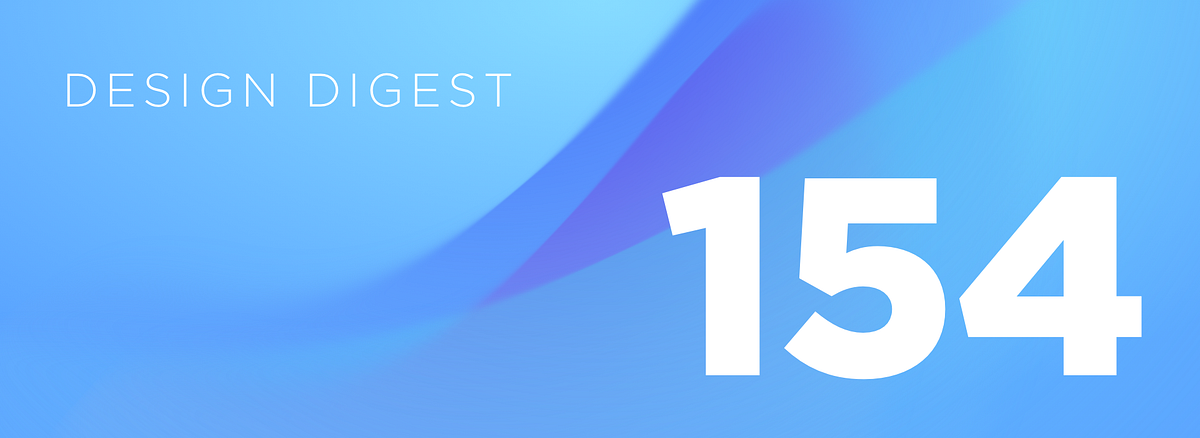
DESIGN DIGEST 154
News of the week about design, products and toolsHIGHLIGHTTwitter introduced its Clubhouse-like audio chat rooms.Google Fonts now supports open source icons.Microsoft embraces Mixed Reality future with Microsoft Mesh:https://medium.com/media/39ada5070fc38d51807fe4b61c67d05b/hrefNew drone FPV by DJ:https://medium.com/media/53b9562267f9330a384134677cbafd7f/hrefARTICLESUX trends 2020: a retrospective.The future of design & creativity.The 50 most beautiful cinemas in the world.WATCHiPadOS 15 Concept:https://medium.com/media/076d12bd7cba4acf3fc85a94fc1763b9/hrefHyundai first electric car.Framework laptop.TOOLS & RESOURCESNew messenger for teams:https://medium.com/media/ebf7fe88f0913a2862f1e502a0fd195e/hrefA visual search engine.Big Sur icons pack.3d liquid abstract animations:https://medium.com/media/c410ed20633f19395ae08ab96231991f/hrefCollection of products for clubhouse.GET INSPIREShenase E-commerce Transaction SolutionsSendlane — ResourcesSegment — App RedesignCourse App UI Exploration字体设计|逆动Previous Design Digest #153Follow us on Twitter, Facebook, Instagram, Dribbble and rivercity.ioDESIGN DIGEST 154 was originally published in Muzli - Design Inspiration on Medium, where people are continuing the conversation by highlighting and responding to this story.
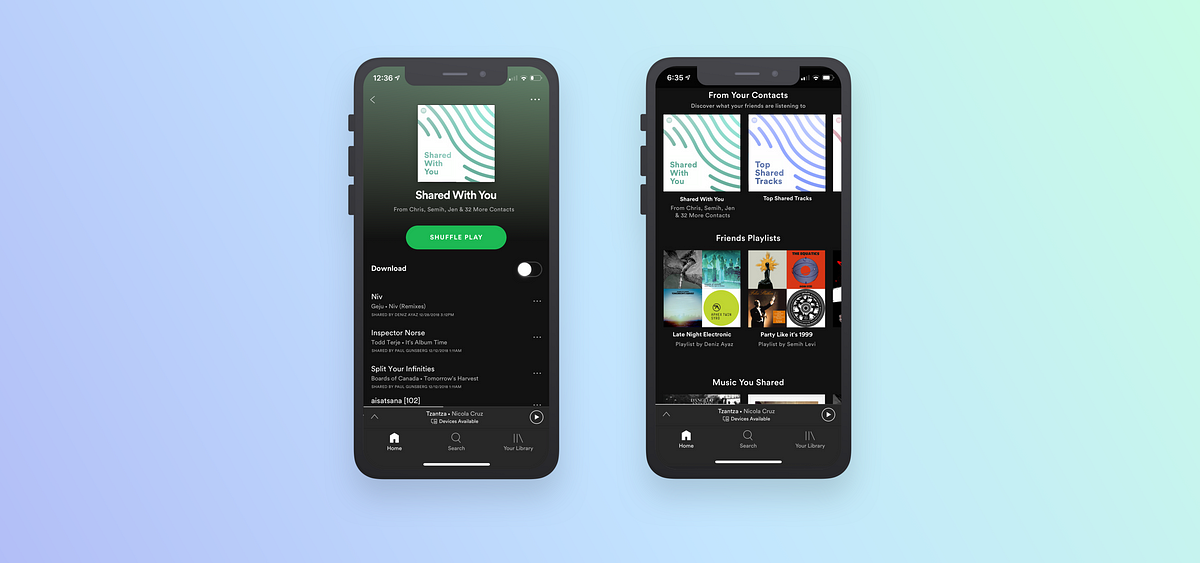
Re-imagining how we share music on Spotify - a UX case study

How a UI Revamp Could Help Make Twitter Successful, Again.

Mobee Dick

Baggage Repair Service Platform Design Case
App design conceptsFireart Studio, an award-winning UX/UI design & product development company, has released its next product design case. This is a baggage repair service platform design case for Dolfi, a company that specializes in repairing baggage. The project activities also cover airline claims, warranty repairs, and personal cases.Dolf iAppDolfi is a company whose deal is to operate from 5 European repair hubs. Their managers and support specialists, as well as craftsmen, help each and every client individually by using their unique resources like door-to-door services, time-proven repair techniques, etc., to solve the users’ baggage issues.“Our task was to develop a complex seamless service for 3 groups of users.” — admits the project team.As a result, the services for the following three groups of users were developed: Dolfi’s customers who wanted to claim their damaged baggage, accessors who received their claims and needed to elaborate them, and airlines who wanted to manage and control all the processes.User Flow fragmentsThe whole digital product development process was long and included various stages of research and development. Several groups of User Personals were created during the study: The Customer side, the Assessors team, and the Airlines. Detailed User Flows based on Personas were deliberately developed to find and eliminate all the roadblocks to simplify the claiming process as much as possible.Among the other product design artifacts, Wireframes were developed to showcase the user interface design and functionality.Dolfi wireframe illustrationAs a result, the team developed a user-friendly chat-based interface, allowing users to claim damaged luggage in a few clicks and receive monetary compensation or a new suitcase in less than 2 minutes. Now users can achieve their goals without any complicated bureaucratic procedures and endless waiting on the airline phone call lines.Fireart Studio keeps its position as a leading UX/UI design studio with a proven reputation both in Poland and expert overseas. After dealing with unusual and challenging design issues for more than ten years, the team can successfully demonstrate its top-notch software design services in any niche. They help to produce exquisite and highly functional designs for corporate companies, small businesses, and individuals who open doors for the digital world.More on BehanceFireart Studio has already managed to cater to both the giants like Google, Atlassian, Huawei, or Swisscom and the most promising startups or business newborns. The possibilities are endless, with more than 80 highly qualified IT specialists on board and years of company experience. Do not hesitate to get in touch each time you need expert design solutions for good.Originally published at https://fireart.studio on May 10, 2023.Baggage Repair Service Platform Design Case was originally published in Muzli - Design Inspiration on Medium, where people are continuing the conversation by highlighting and responding to this story.

Designing Wysa’s Illustration guide
Keeping hand-drawn styles alive — a brief case studyContextI interned as a UI/UX Designer at Touchkin during the summer of 2017. Touchkin’s primary product is Wysa — A mental health AI chat-bot. I wasn’t a very seasoned designer back then, but I realized that illustrations were a vital part of this product, because:AI chat can feel very robotic (Oh the irony!). Graphics like images, GIFs, and stickers are a fitting break to the mechanical feel of the user experience of a chat-bot. This gives the AI a human touch. ( Imagine WhatsApp without emojis. Scary.)I went through several user reviews on Play/App store and found that the cutesy GIFs Wysa sends occasionally can make a sad soul feel 10x (Okay maybe 5x, sue me) times better than before.At that time, Wysa’s GIFs were not created in-house. We used Chibird’s content. One of my many missions during this internship was to create a whole new set of GIF’s in my own unique style, in-sync with both the product and brand. At the end of my 2-month internship, I’d created almost a 100 GIFs for the chat-bot (it’s true).Setting the style — Jeez enough of flats and isometrics!Let’s look at illustration trends nowadays (since 2017):Images tagged ‘illustration’ on DribbbleImages tagged ‘illustration’ on BehanceWell, lookie here. Designers are slowly but surely adopting flat, isometric styles with bold gradients and vibrant colors. There’s nothing wrong with this; In fact, I swoon over too many such illustrations each day. However, Wysa is a heavily people-centric product (Isn’t everything these days?) and dealing with mental health is a sensitive issue which requires utmost empathy. My manager would always stress on how the entire product was centered around empathy — which is truly the crux of Wysa. All designs should be user-centric, but for Wysa, it was insanely vital because the users themselves were half the product.‘Empathy’ is the modus operandi of a mental health AI chat-botSo now I had to empathize with the user through illustrations, presented through GIFs, in an AI chat-bot. Phew. The above trending styles seemed to lack empathy. They were(are) amazing, aesthetic and beautiful UI, but didn’t feel all that “human”.From my previous works on the product, I already had an understanding of the various user persons. My first thought was — “How would these people relate to graphic images? Keeping in mind that they are unstable, what kind of colors and/or images would they prefer to see?” (I immediately thought of baby and cute cat GIFs — funny and soul soothing 😌).I presumed that people relate to artwork which looks more like something they themselves would draw (I’m talking about normal, hand-drawn stuff). Logical enough right? I confirmed this assumption from multiple sources including past user activity, reviews, and team inputs.People loved the existing Chibird’s style. It was simple yet powerful, light yet impactful, and more importantly, they were motivating and uplifting. This was added to my list of inspirations. I went ahead with some research to add more to this list:A few references collected for various hand-drawn styles and different moodsTwo days in and I felt a huge rush of inspiration. I designed the characters using my Wacom One ❤ and Photoshop. As I designed for the content provided by my team, new characters and themes came up. It was an exciting time to be in 👽*Drum roll*….Aaand here’s a couple of my GIFs and the complete illustration guide:A few GIFs I made for WysaWysa illustration guide.pdfNote: All the above GIFs and the Illustration guide are copyright of Touchkin E-services Pvt Ltd and cannot be used without permission.ConclusionI’m not an illustrator or a graphic designer, but design is about solving a “people-problem” (be it art, code or politics) and that’s what I’d hoped to achieve. I hope this article left you all with a sense of learning and inspiration to help you with your next illustration project ✌️P.S. Take a look at Grant Snider’s comics. They’re an absolute delight.I’d deeply appreciate any feedback and criticism about both my writing and what I have to say. See more of my stuff: Medium, Dribbble, Behance, Touchtalent. Promise I won’t bore you 😀Designing Wysa’s Illustration guide was originally published in Muzli - Design Inspiration on Medium, where people are continuing the conversation by highlighting and responding to this story.
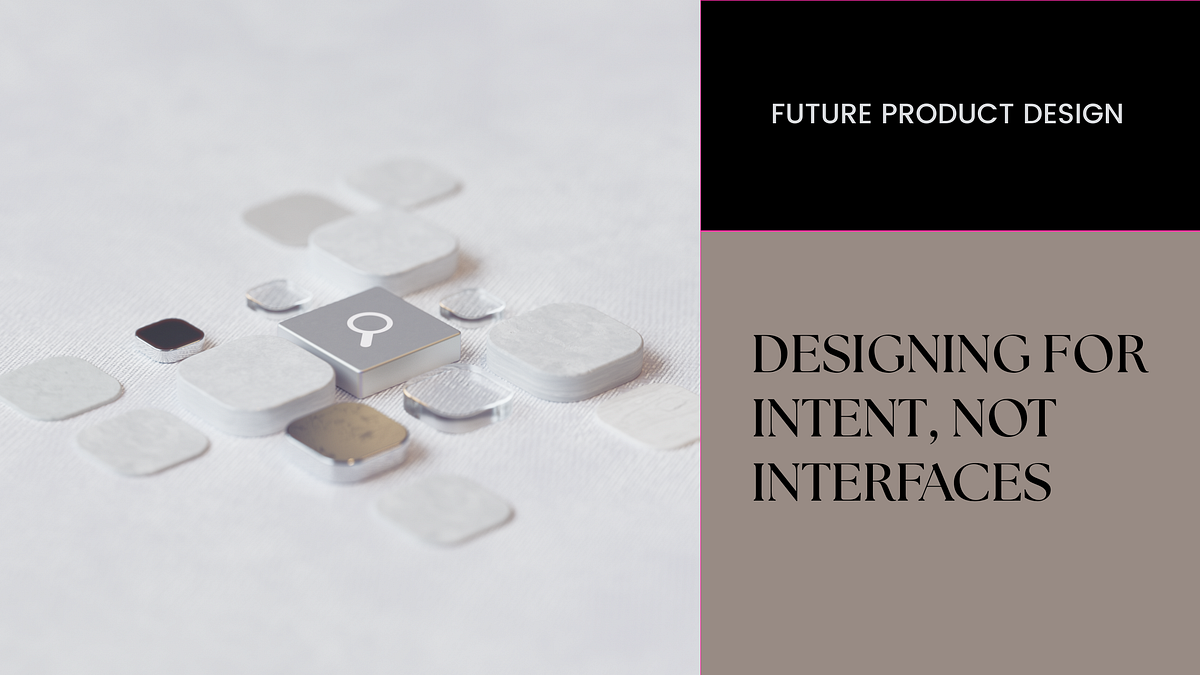
AI’s Invisible UI: Designing for Intent, Not Interfaces
Why the future of product design may have less to do with screens and more with systems of trust.When I first began learning product design earlier this year, I expected to spend hours crafting beautiful UIs — selecting the perfect gradients, obsessing over typography, and studying how apps like Notion or Pinterest use space and rhythm.And I did.But it didn’t take long before the ground started shifting.Suddenly, Figma wasn’t just where I arranged components — it became where AI helped generate layouts. I could describe an interface and get a usable wireframe in seconds. The interfaces I was learning to design were, in some cases, being built by the tools themselves.But this shift didn’t discourage me.It reframed everything.If screens are no longer the only touchpoint, what are we really designing?The answer — I’ve come to believe — is intent.From Screens to SystemsTraditionally, UI design has been about what users see and touch. It’s visual. Concrete. It responds to our taps and scrolls.But AI-driven experiences — think ChatGPT, Siri, or even a smart fridge — blur the lines between interface and intelligence. Often, there’s no visible UI at all.This is the age of the invisible interface, where interactions become conversations, predictions, or actions that happen without explicit input. You don’t select a button labeled “remind me tomorrow” — your calendar just knows based on the context of your chat.For designers, this is a radical shift. We’re no longer just arranging elements on a screen; we’re designing decision flows, contextual triggers, and trust loops.And most of that doesn’t live inside a layout. It lives in the logic underneath.Designing for Invisible Interfaces Means Designing for ContextTake Google Now or Apple’s Siri Suggestions. These don’t present traditional interfaces like a music player or calendar app does. Instead, they offer something at just the right time — a map when you’re leaving for work, a podcast when you plug in your headphones, a reminder based on your emails.There’s an elegance in this kind of design. It’s subtle. It respects the user’s cognitive load.But it’s also incredibly complex.To design for context, we need to:Understand user habits and timingMap intentions, not just actionsConsider edge cases where the AI might get it wrongDefine how the system fails gracefully without frustrating usersAnd most importantly, we need to do all this without relying on screens as crutches.This is what makes invisible UI so challenging — and so exciting.Intuition Over InstructionIn traditional UIs, we guide users:“Click here.” “Start now.” “Add to cart.”Invisible UIs flip the model. They have to anticipate, interpret, and adapt.That means designing systems that understand, not just systems that display.In the world of AI-powered products, a good design isn’t one that gets users to finish a flow faster. It’s one that understands why the user is here in the first place — and then adapts the flow in real time.This means:Prioritising predictive UX (like autocomplete or smart defaults)Embracing non-linear flowsShaping systems that respond to vague input with clarityA prompt like “reschedule my meeting” shouldn’t ask which one if the context makes it clear. And if it’s not clear? The system should ask the right clarifying question — not bombard the user with dropdowns and options.Design, in this case, is dialogue.And good dialogue starts with understanding.Trust Is the New UIHere’s a lesson I’m still learning:In AI-powered interfaces, trust is everything.Why? Because the more power we give to AI, the more users need to believe that the system will act in their best interest — even when they can’t see how it works.There’s no pixel-perfect UI to fall back on. No lovingly crafted empty states or playful animations to reassure the user. The experience happens beneath the surface.That means designers have a new job: designing for trust.This involves:Transparency: Making it clear what the AI knows and how it decidesControl: Giving users a way to override or correct the systemFeedback: Letting users know their actions shaped future outcomesBoundaries: Designing ethical defaults, especially around data and privacyWhen trust breaks, the whole system collapses — no matter how smart the AI is.Invisible Doesn’t Mean ImpersonalThere’s a risk in all of this:That in stripping away interfaces, we also strip away personality. That we create sterile, robotic flows where once there was human warmth.But it doesn’t have to be this way.Designing for invisible UI means bringing in tone, voice, timing, and emotion — the invisible elements of experience. Think about the joy in a well-timed Slack emoji reaction, or the quiet comfort of Duolingo’s gentle reminders. These aren’t traditional UIs, but they’re deeply human.The best invisible interfaces don’t disappear — they become part of the user’s rhythm.What the Future Might Look LikeHere’s a vision I keep coming back to:A journaling app that gently nudges you with questions based on your emotional toneA productivity tool that rearranges your to-do list after reading your sleep dataA language app that adapts your learning style without asking you to define itA design tool that watches how you iterate and subtly adjusts your spacing rules or layout suggestionsIn each of these, there’s no visible “interface” in the traditional sense — just a system tuned to you.We’re not there yet.But we’re closer than we think.What it means For New Designers (Like Me)I used to worry that AI would make my design skills obsolete. If a tool can generate UI faster than I can sketch it, where do I fit in?But here’s what I’ve realised:AI doesn’t eliminate design — it shifts the playing field. It demands better systems thinking, sharper ethics, and deeper empathy.It forces us to ask not “how should this screen look?”But:“What does the user need right now, and how can we meet them without asking them to find the right button?”And that’s not just a new challenge.It’s a new creative frontier.This kind of design demands more from us. Not just visually, but intellectually. Emotionally. Philosophically.We’re designing conversations.Designing decisions.Designing behaviours.Designing the Invisible Starts with Seeing DifferentlyTo design for invisible UI is to shift focus:From layout to logicFrom aesthetics to intentFrom features to flows of understandingIt’s harder. It’s messier.And for someone like me — still learning, still asking questions — it feels like the most exciting place to be.Because when we stop designing for screens and start designing for intent,we’re not just making better products.We’re making better experiences.More responsive. More personal. More real.Even when they’re invisible.……💡 Stay Inspired Every Day!Follow us for a daily stream of design, creativity, and innovation.Linkedin | Instagram | TwitterAI’s Invisible UI: Designing for Intent, Not Interfaces was originally published in Muzli - Design Inspiration on Medium, where people are continuing the conversation by highlighting and responding to this story.

AI’s Invisible UI: Designing for Intent, Not Interfaces
Get access to thousands of freshly updated design inspiration pieces by adding Muzli to your browser.
Loved by 800k designers worldwide, Muzli is the leading go-to browser extension for creative professionals.